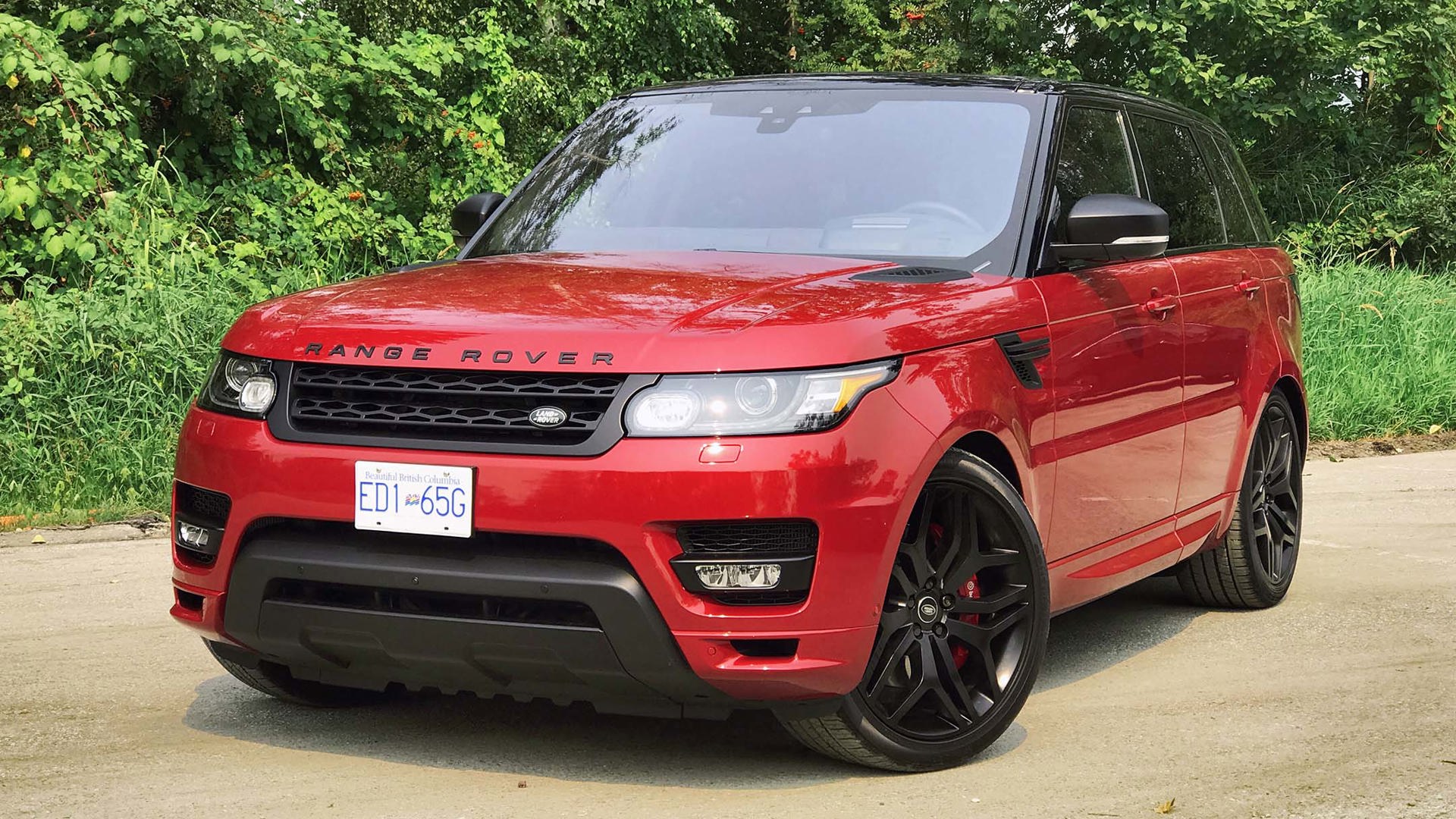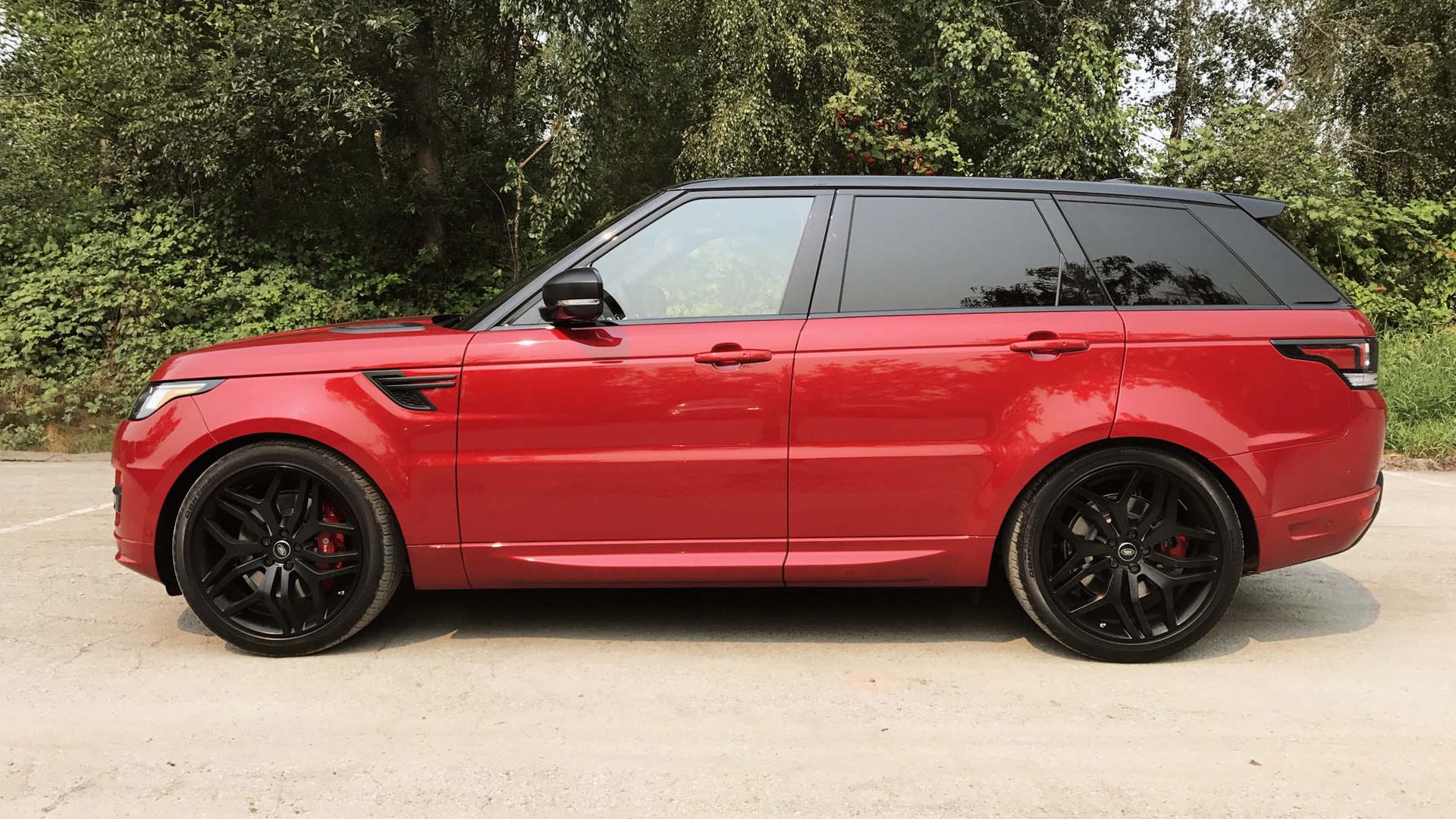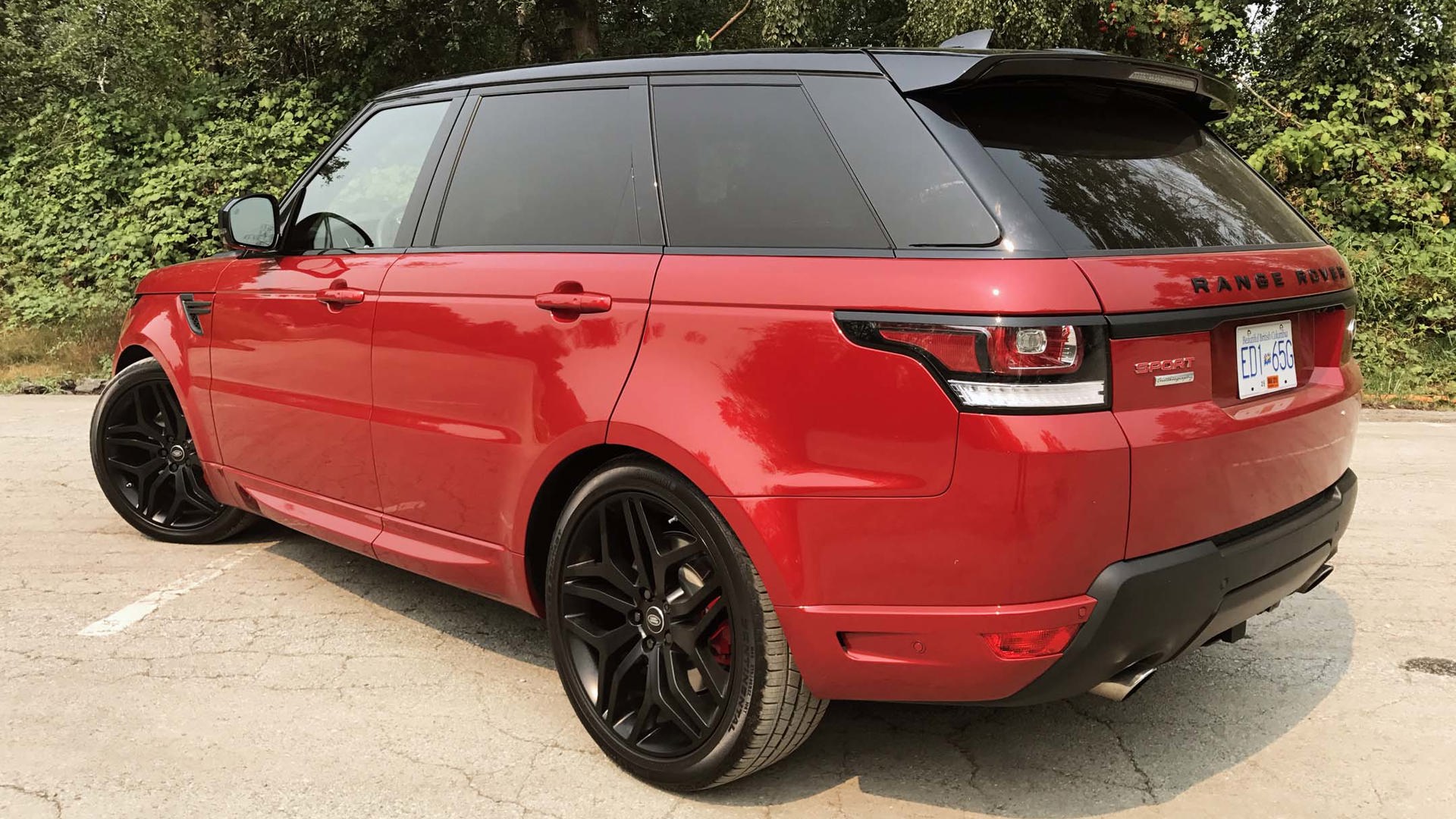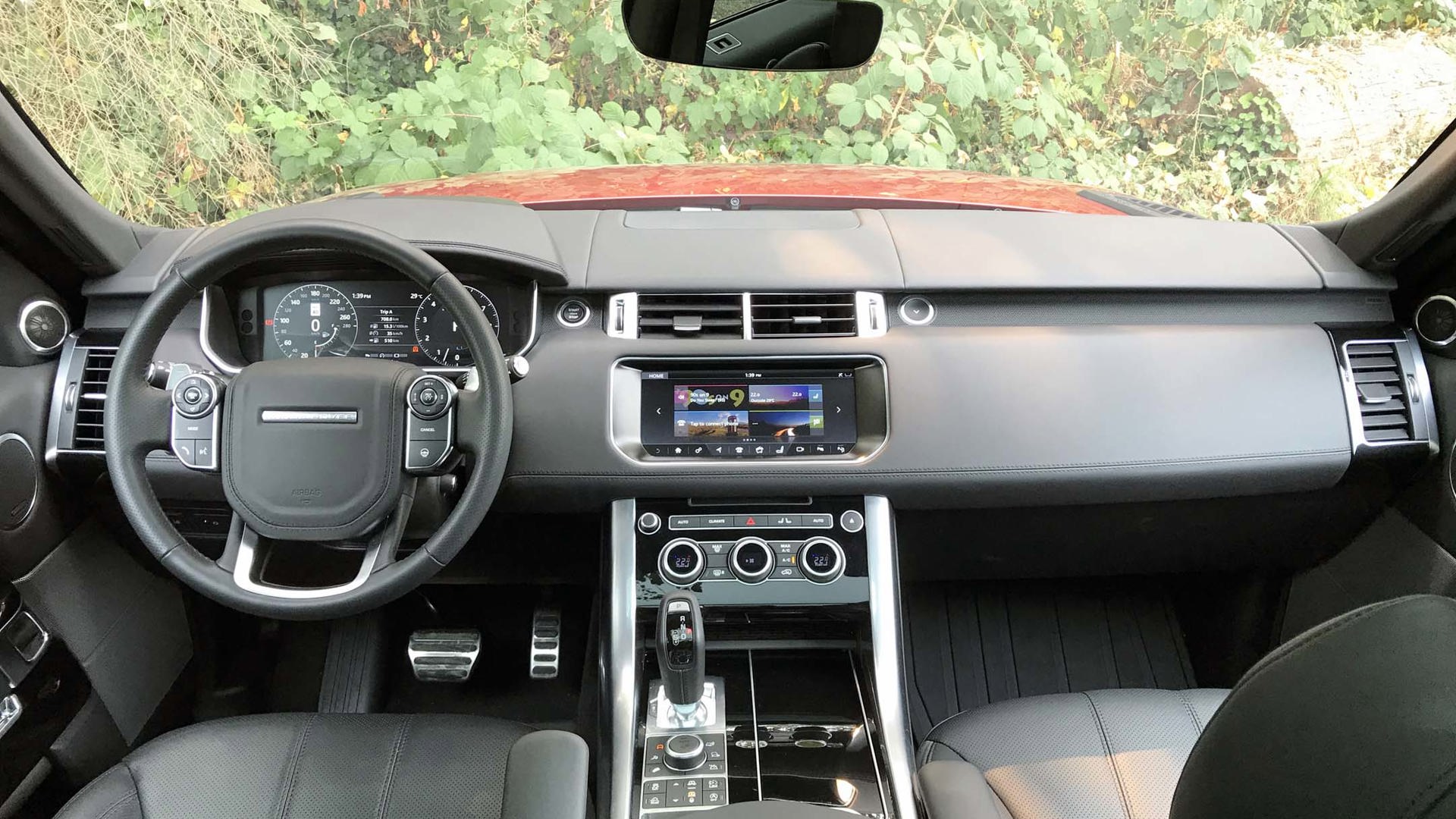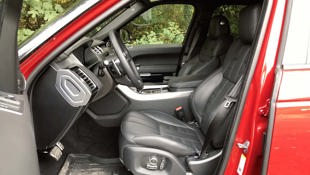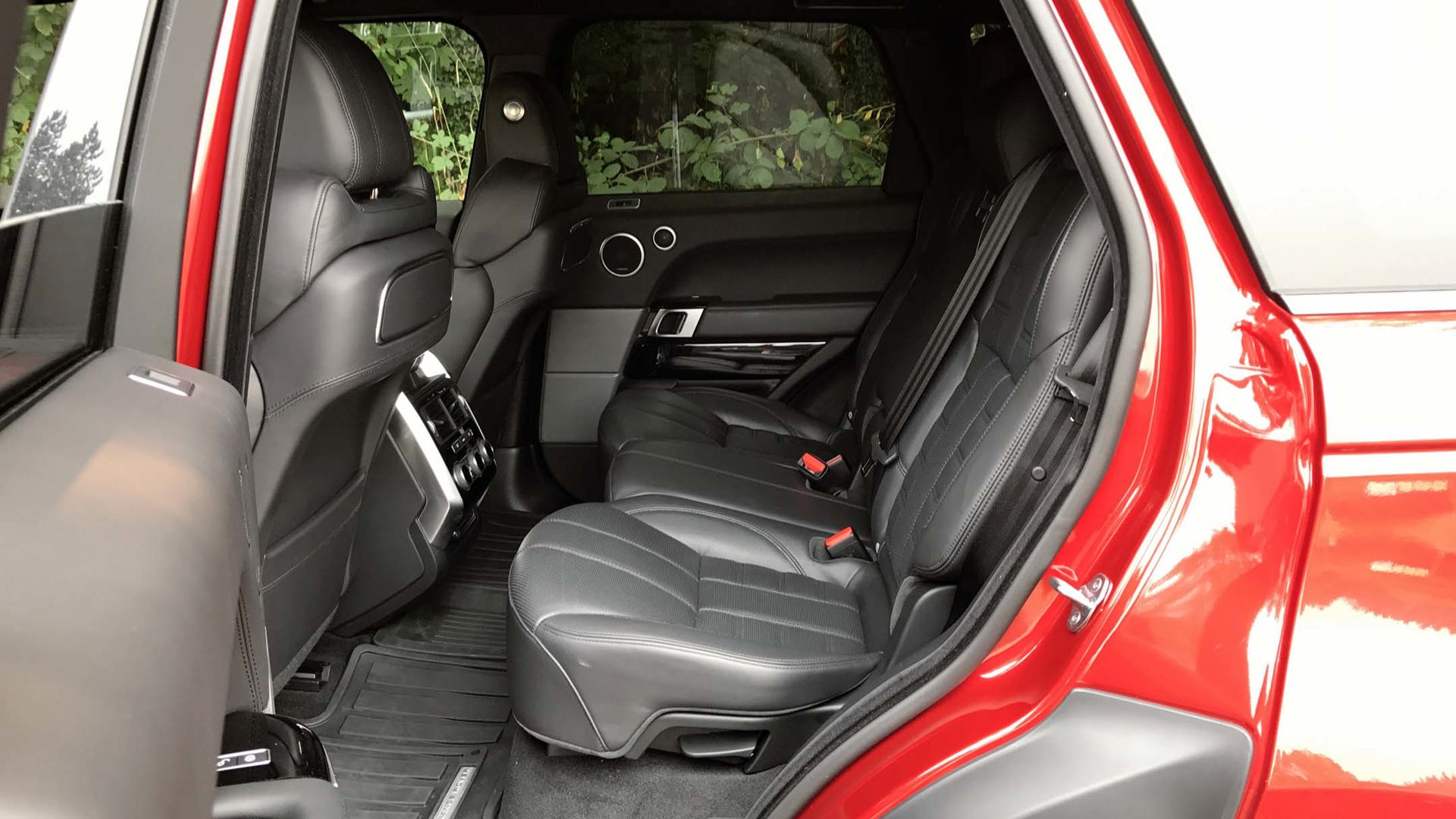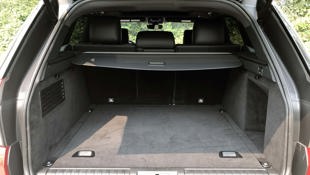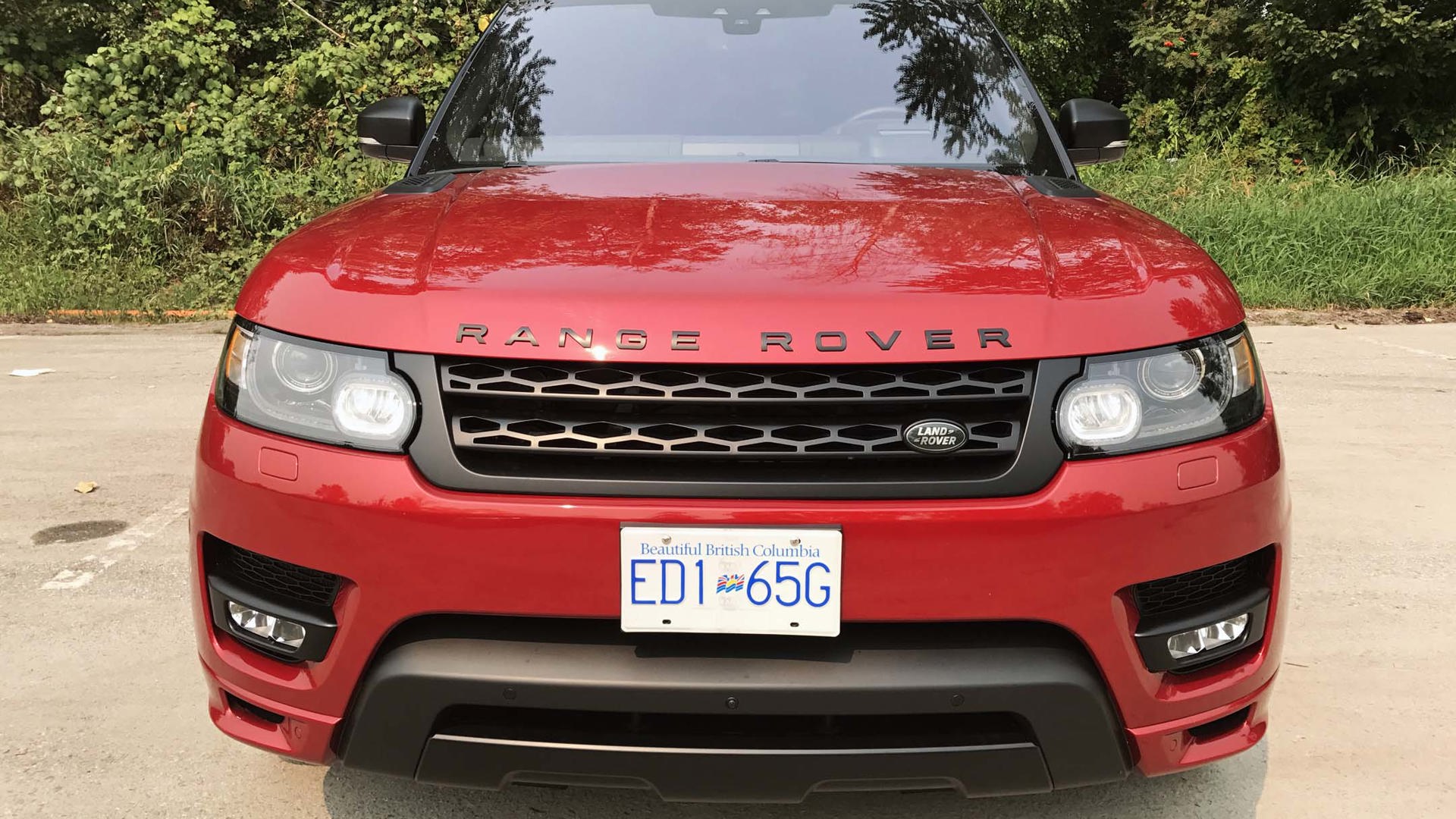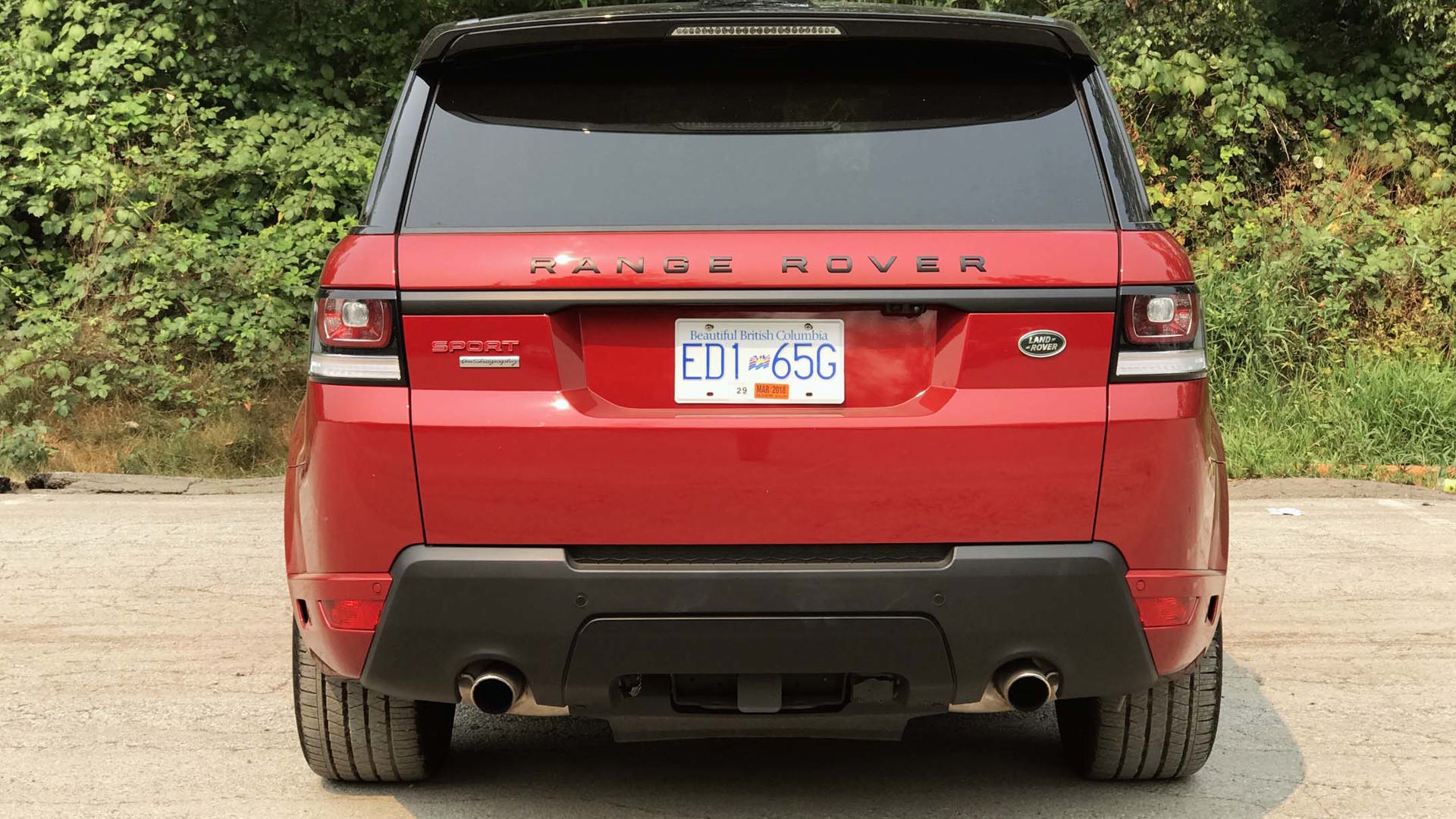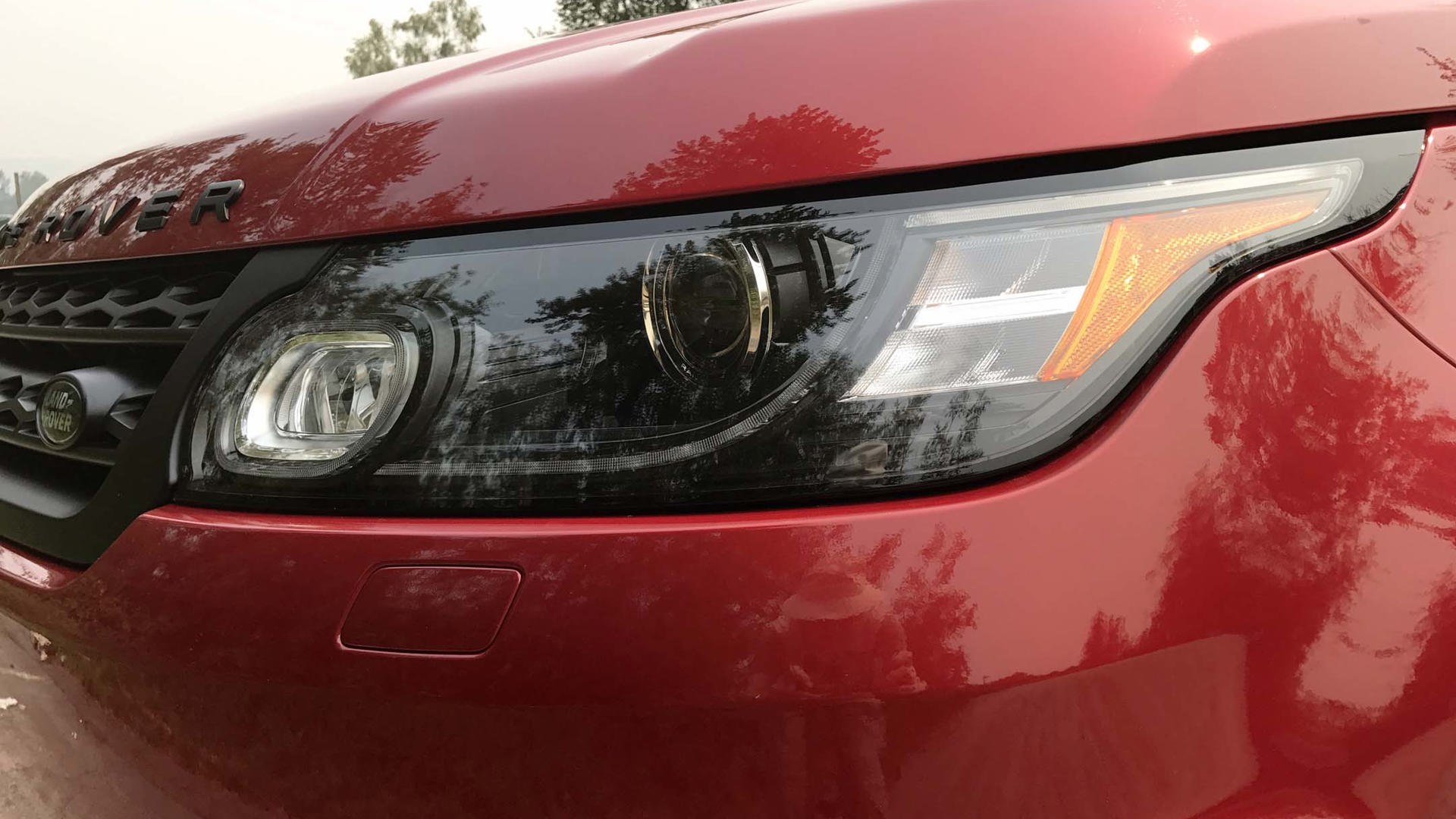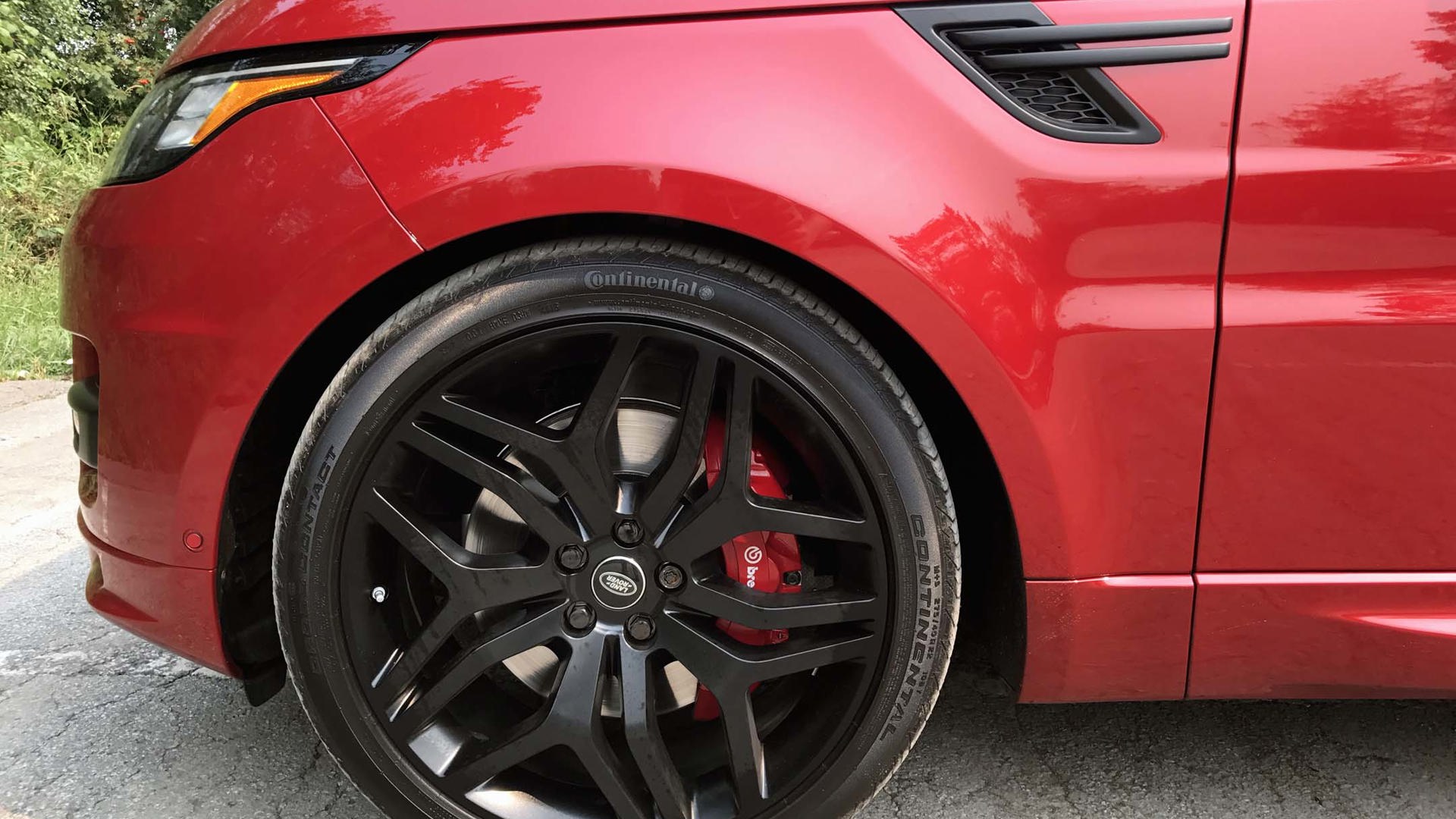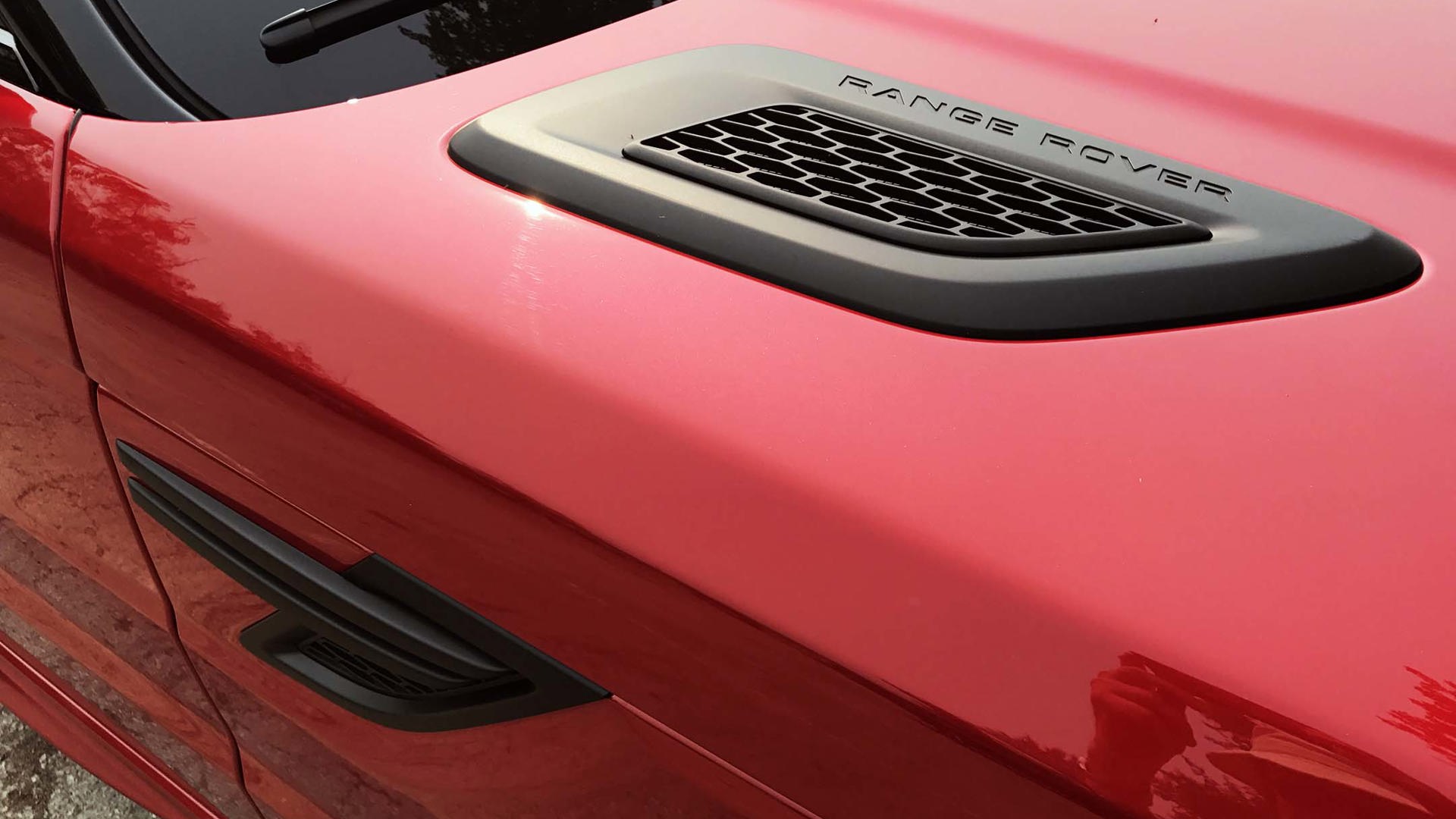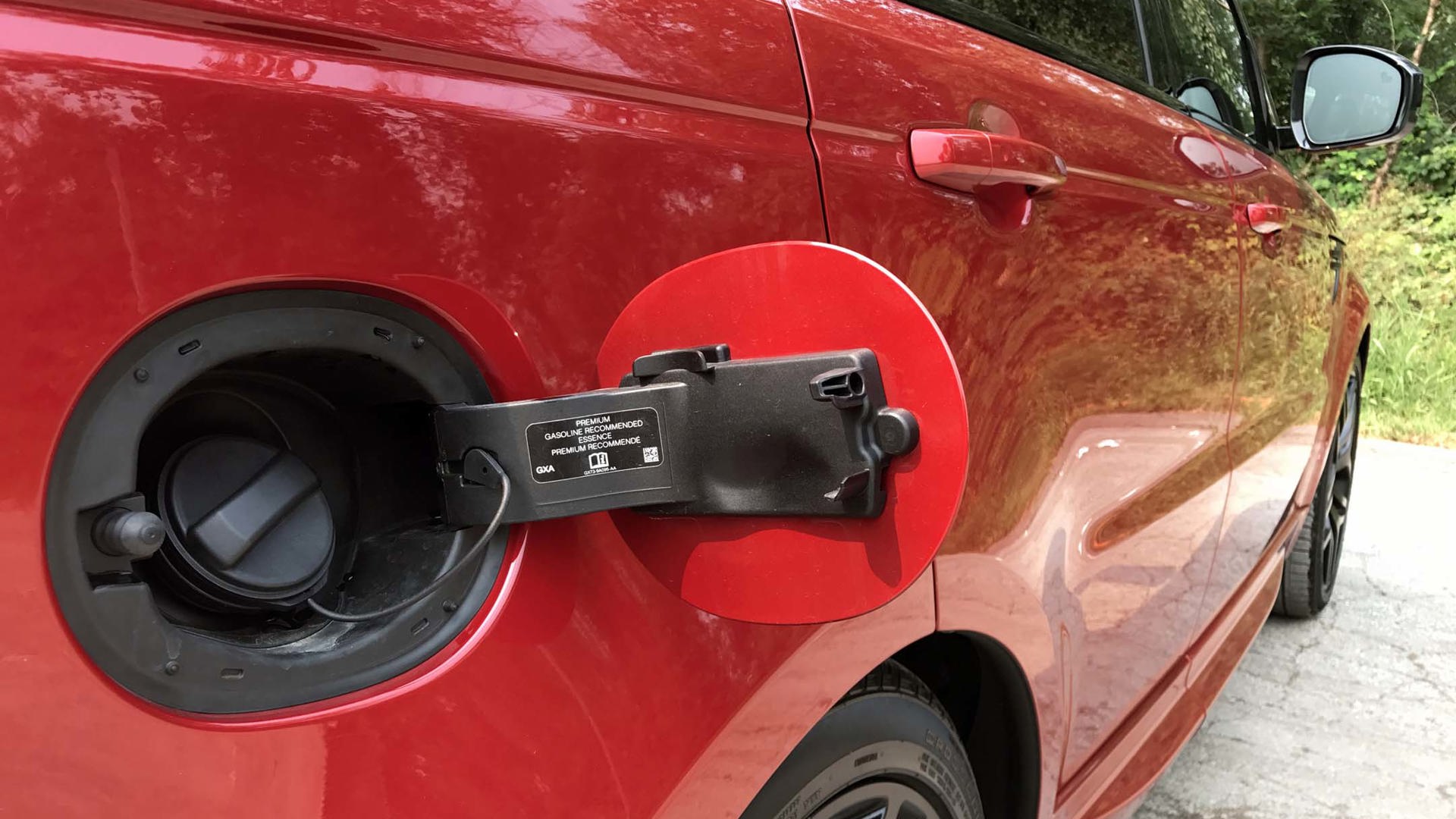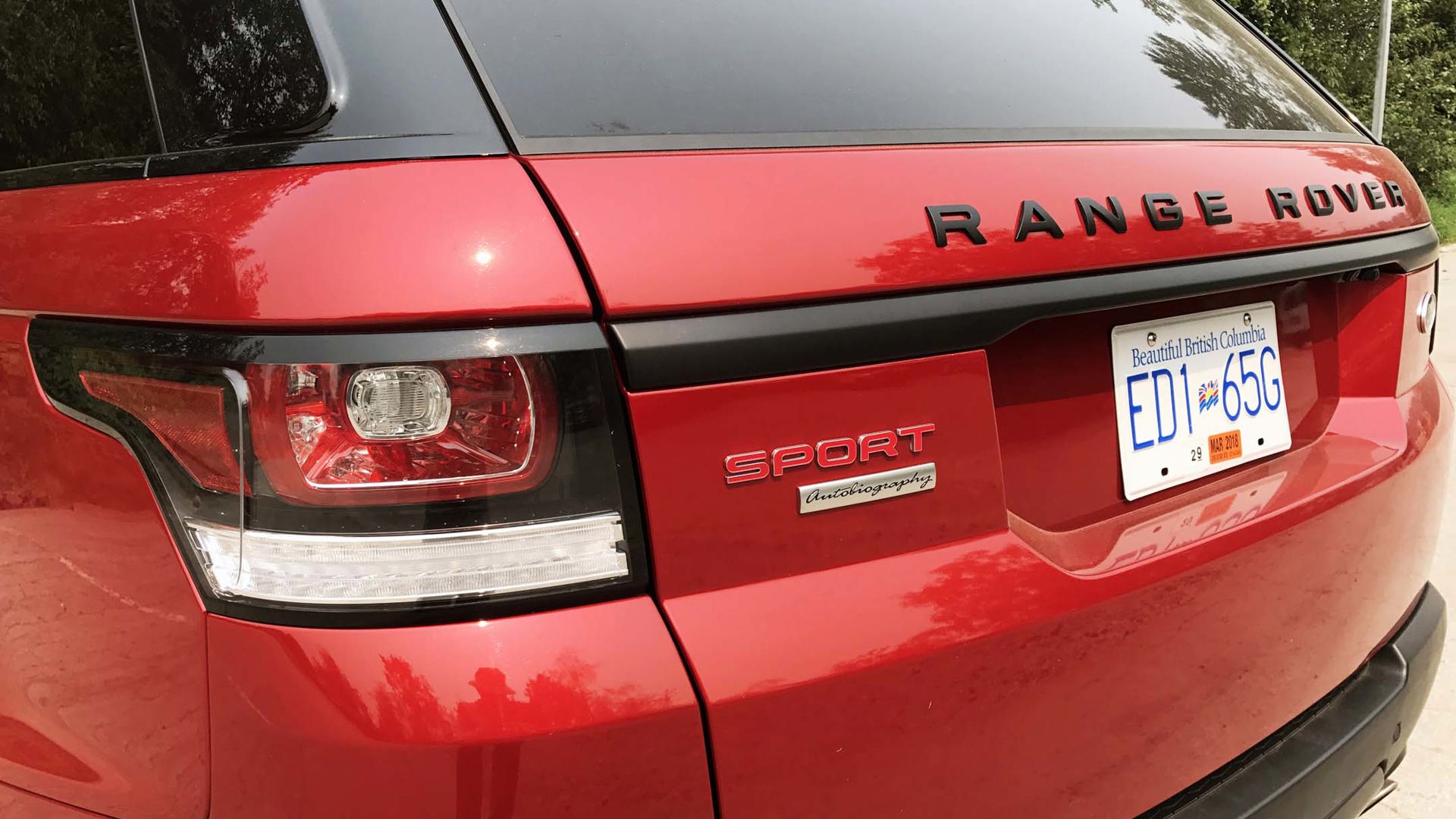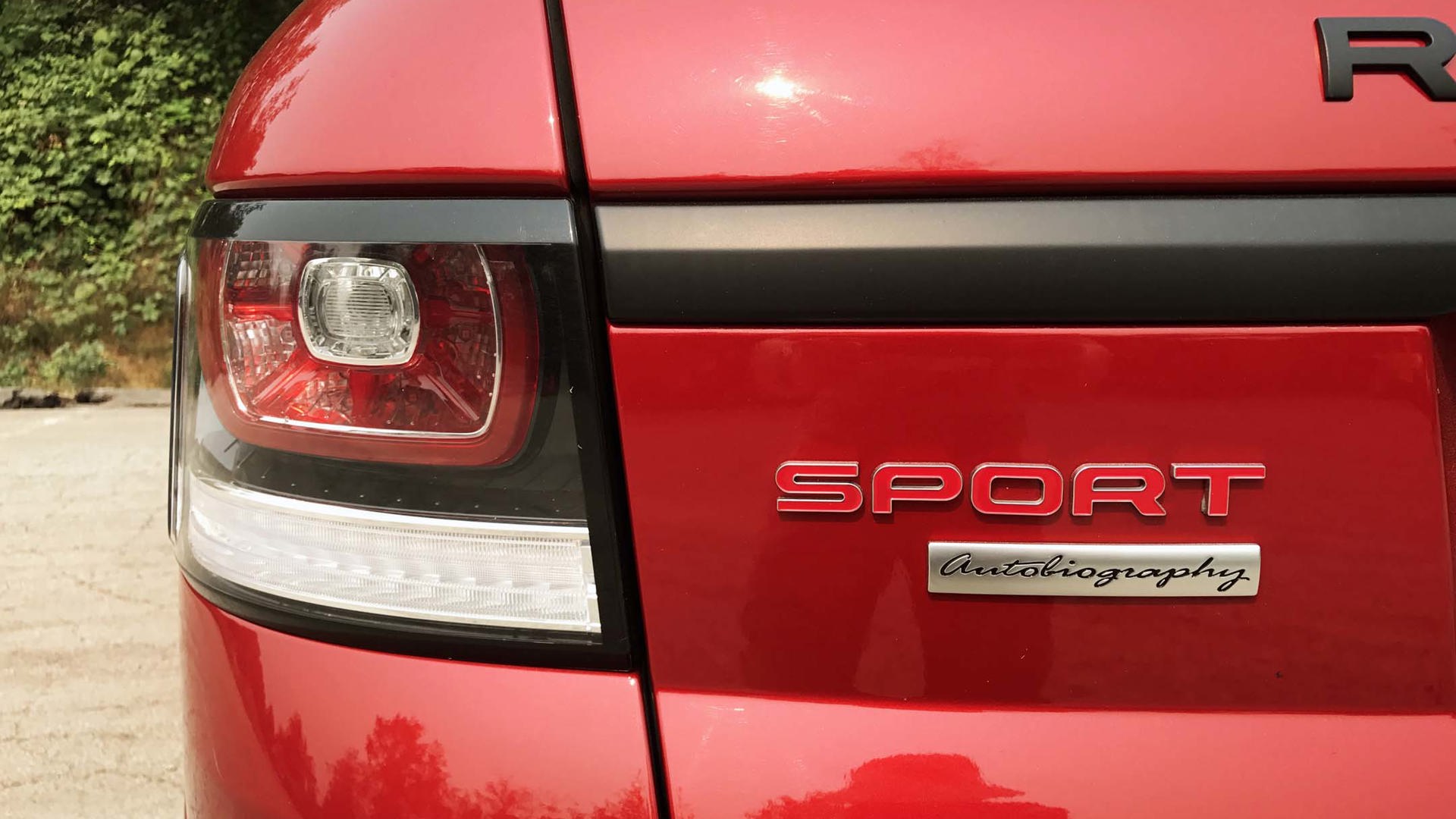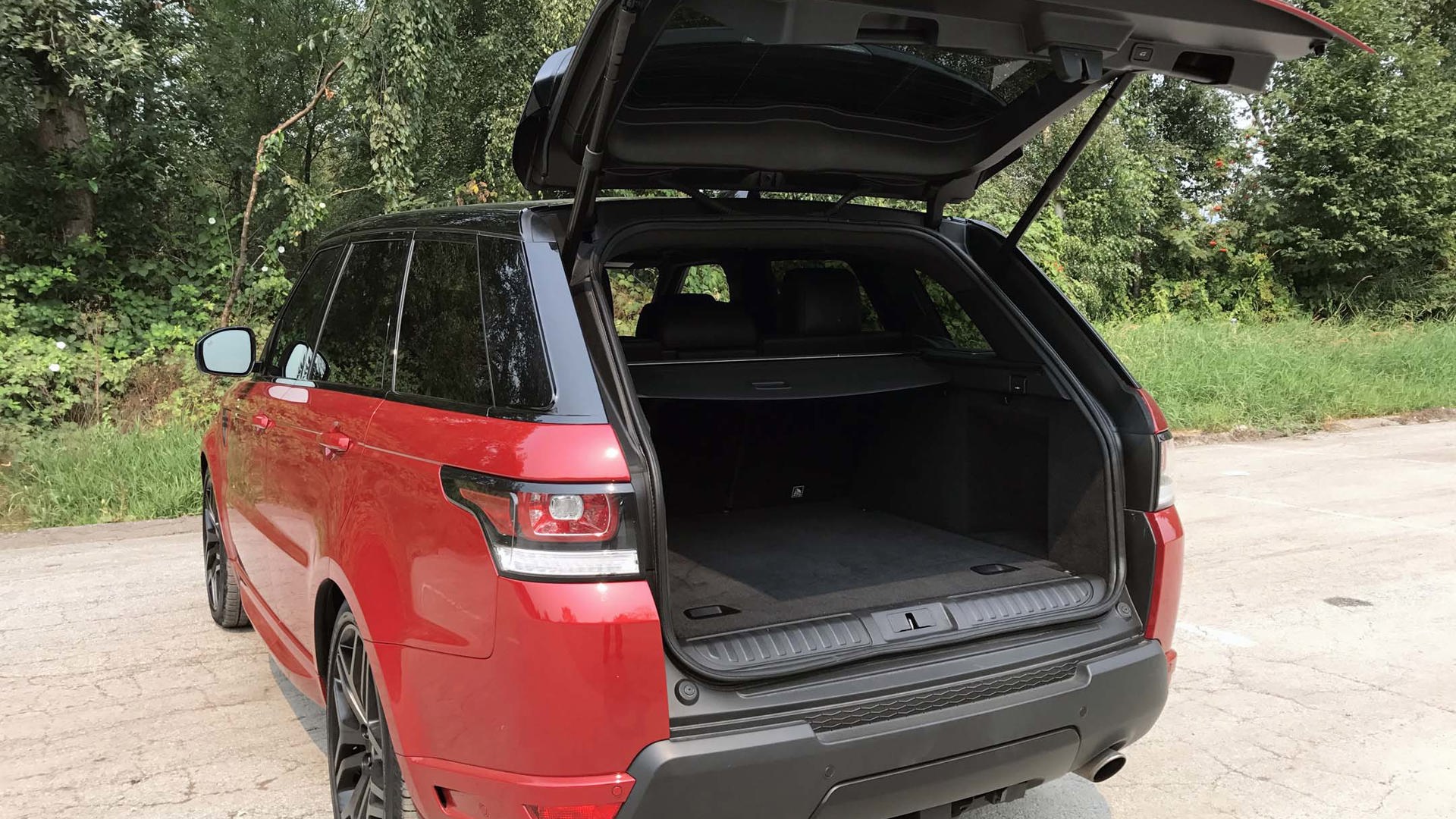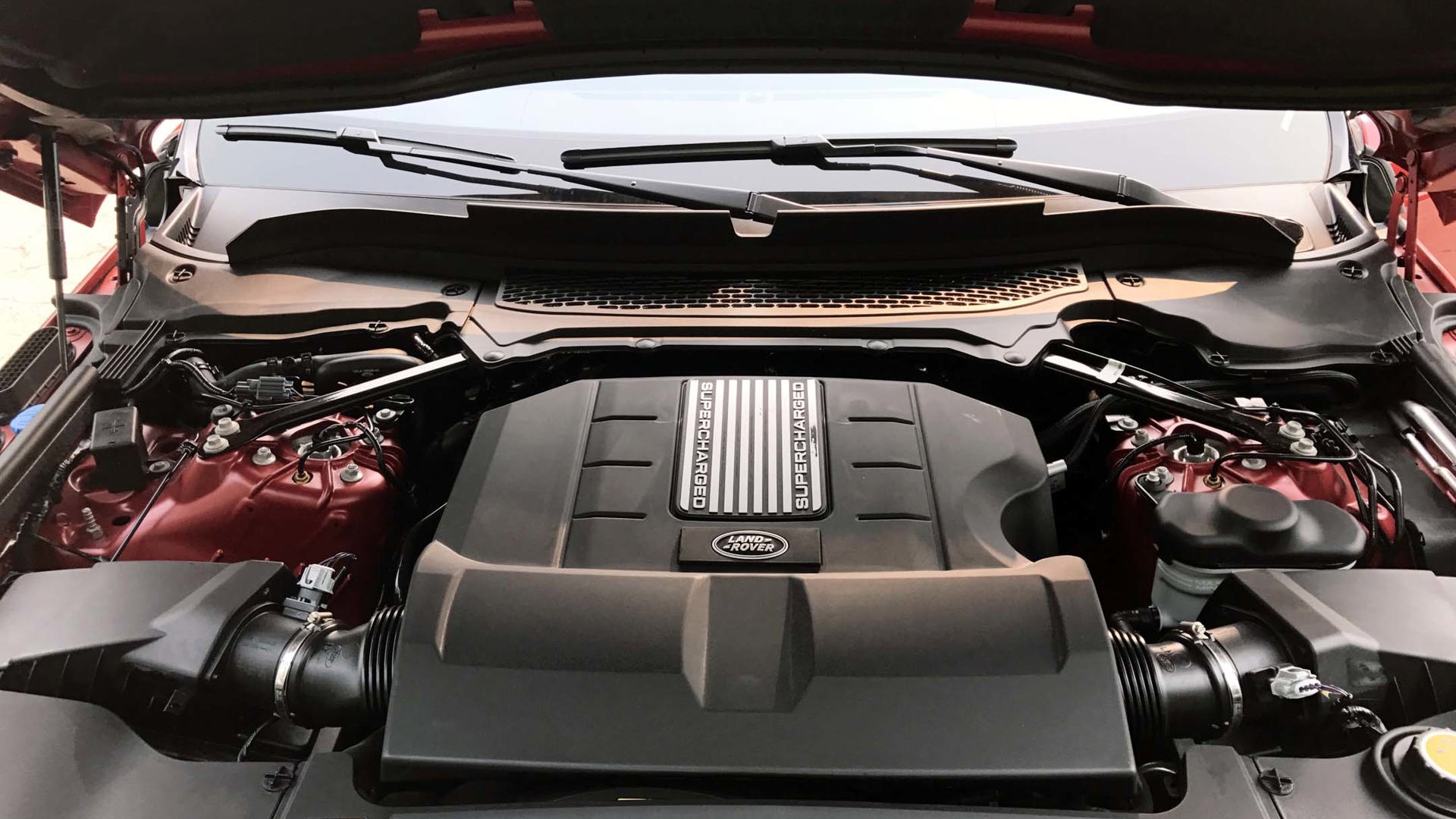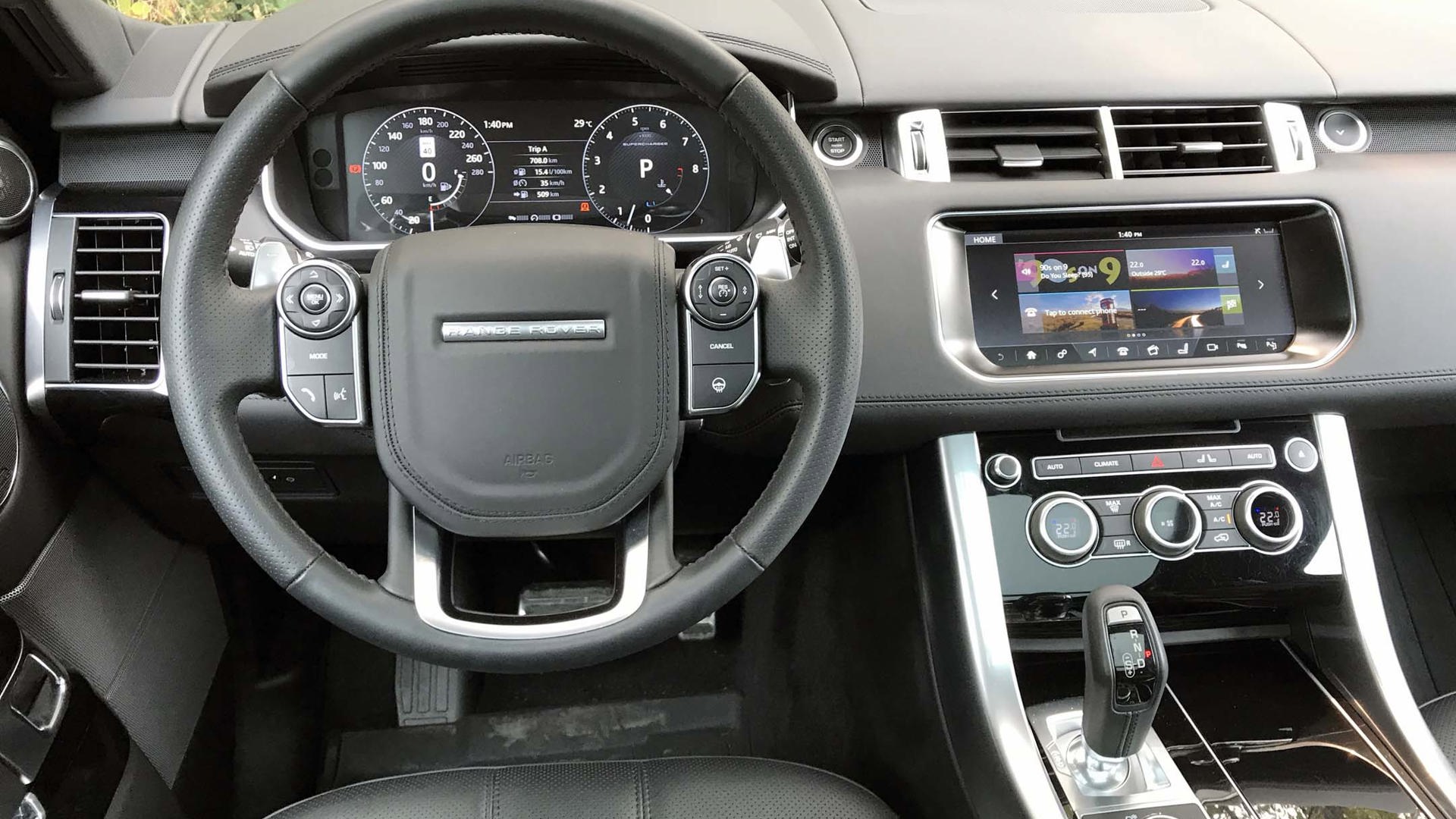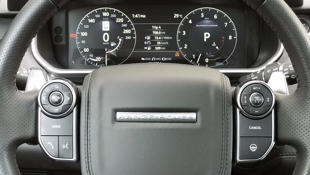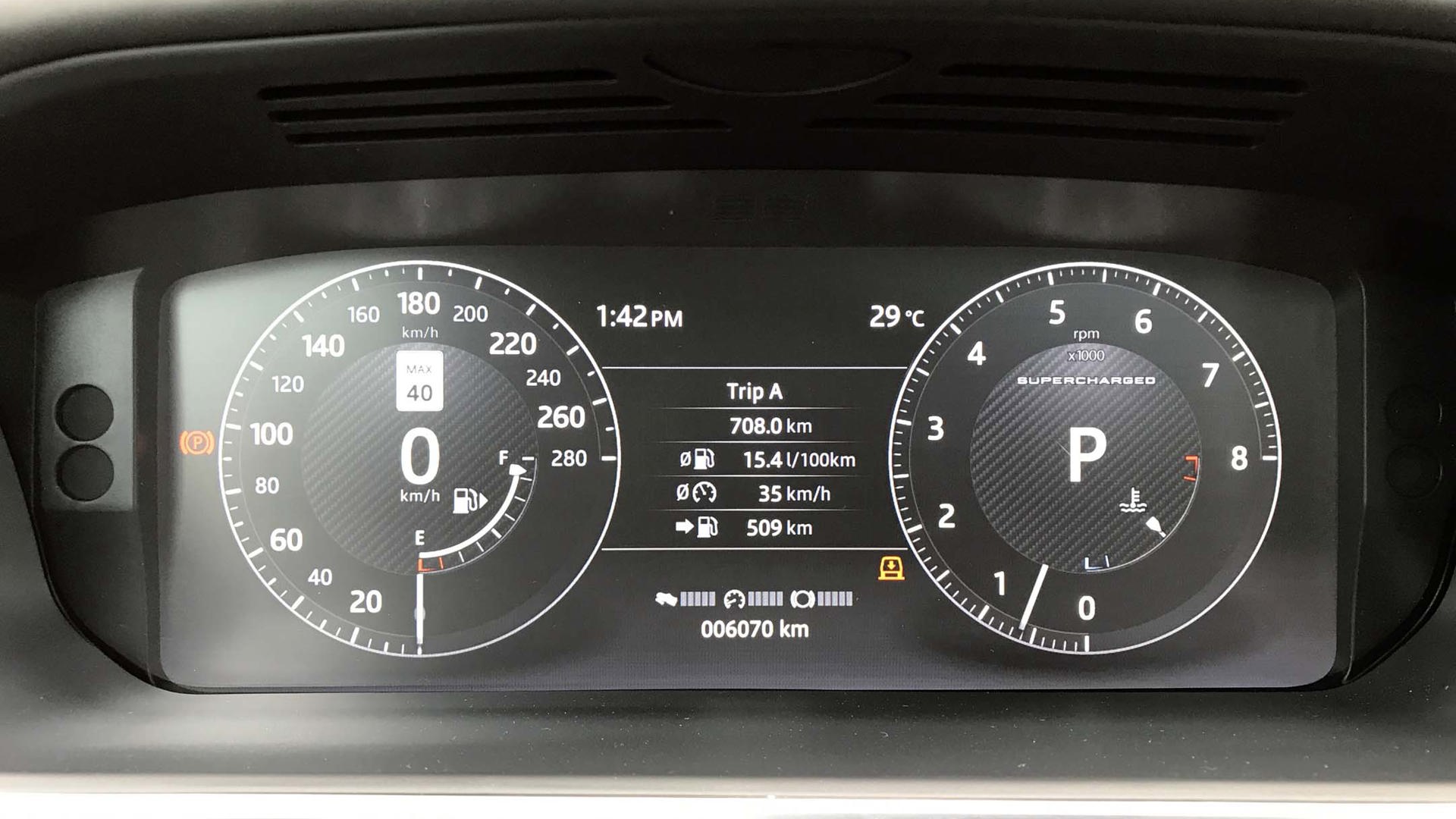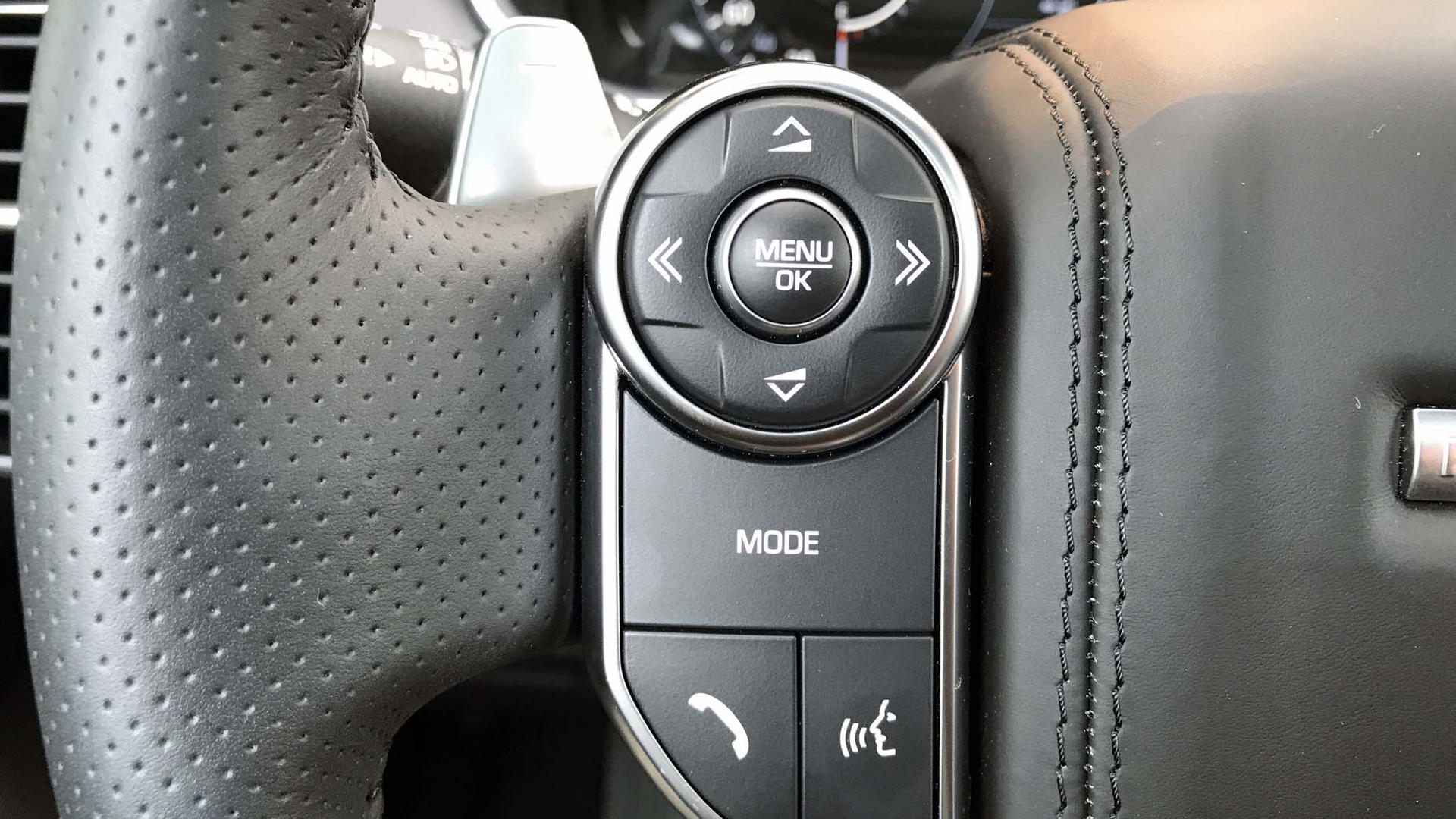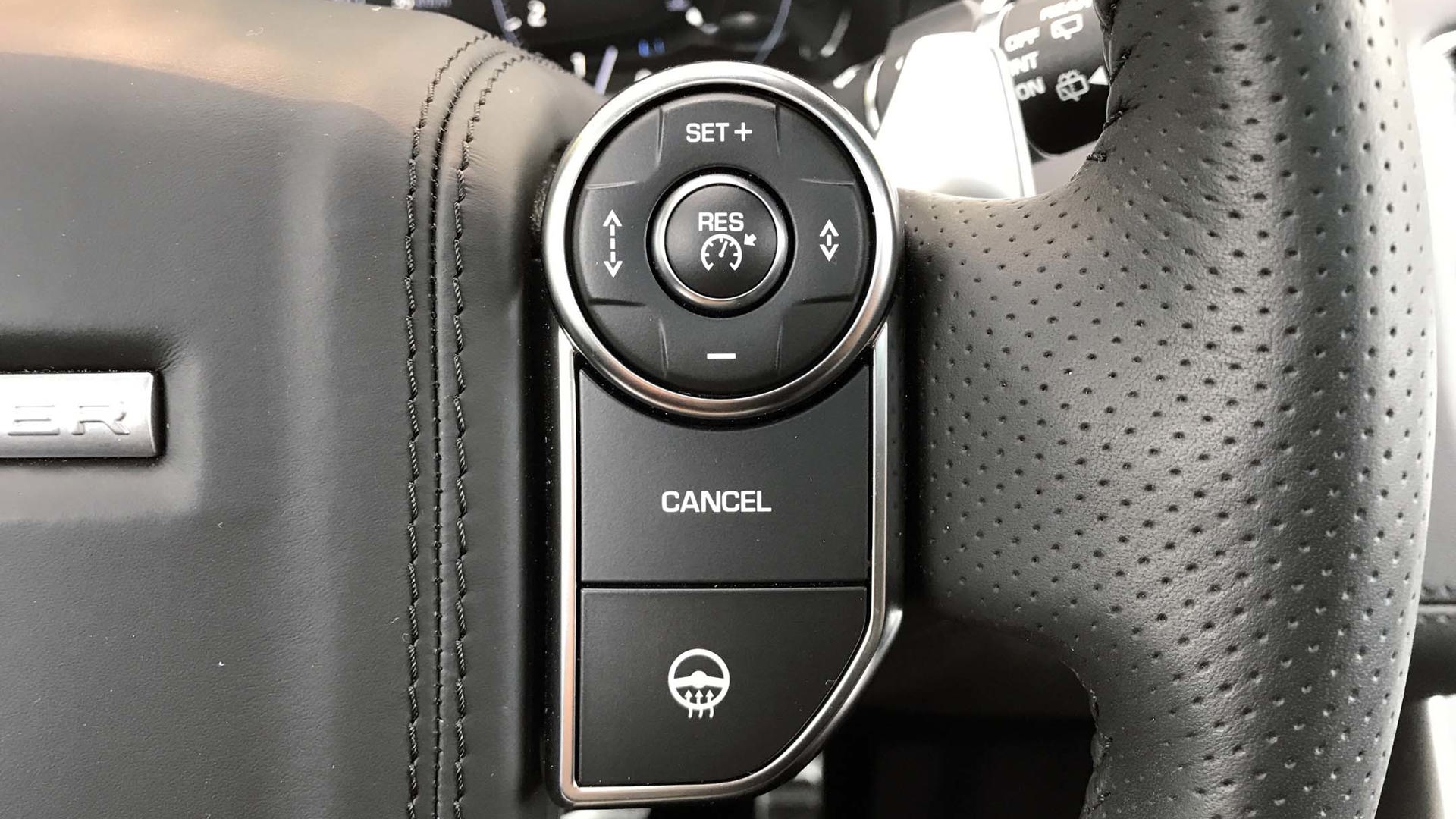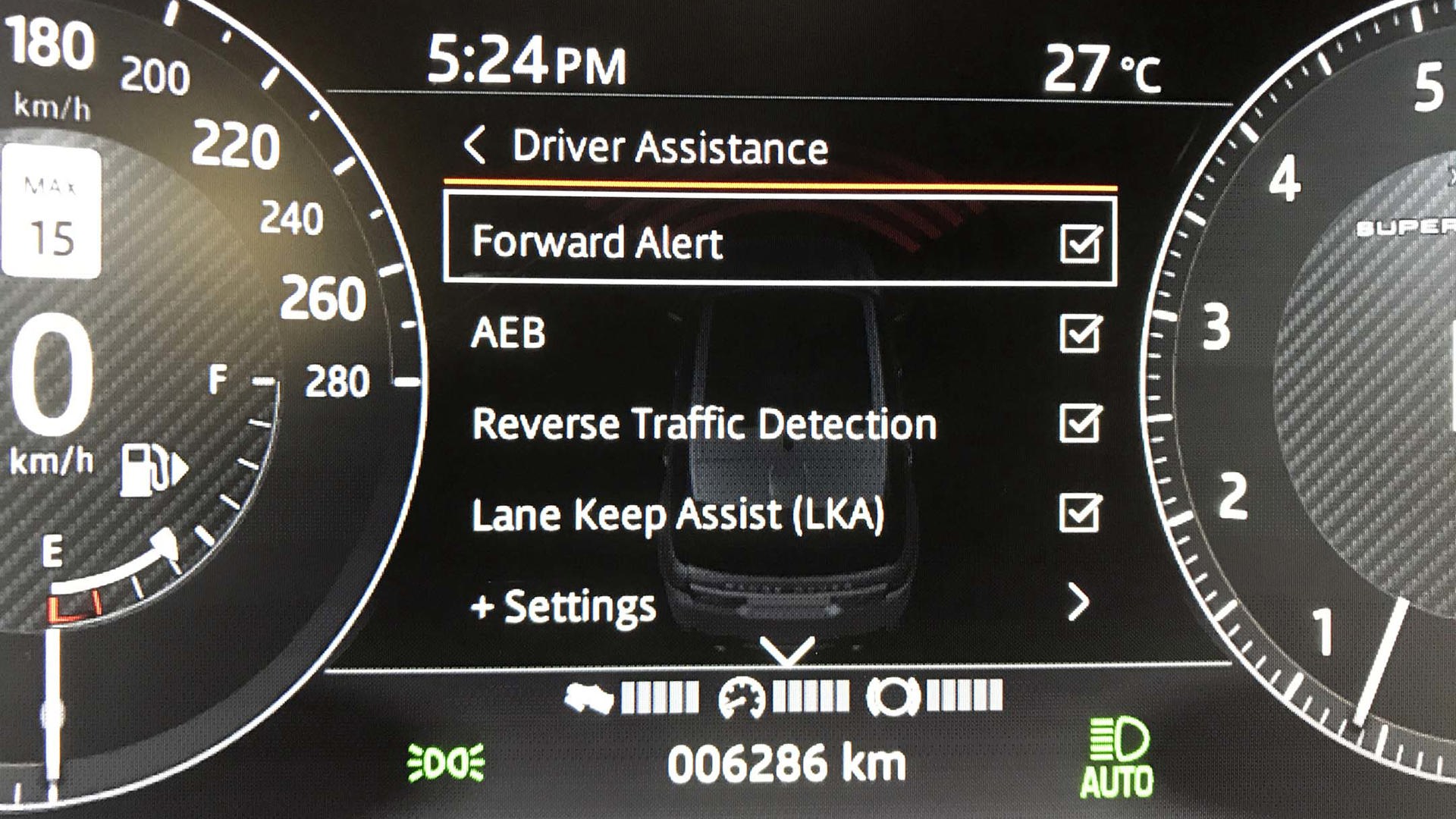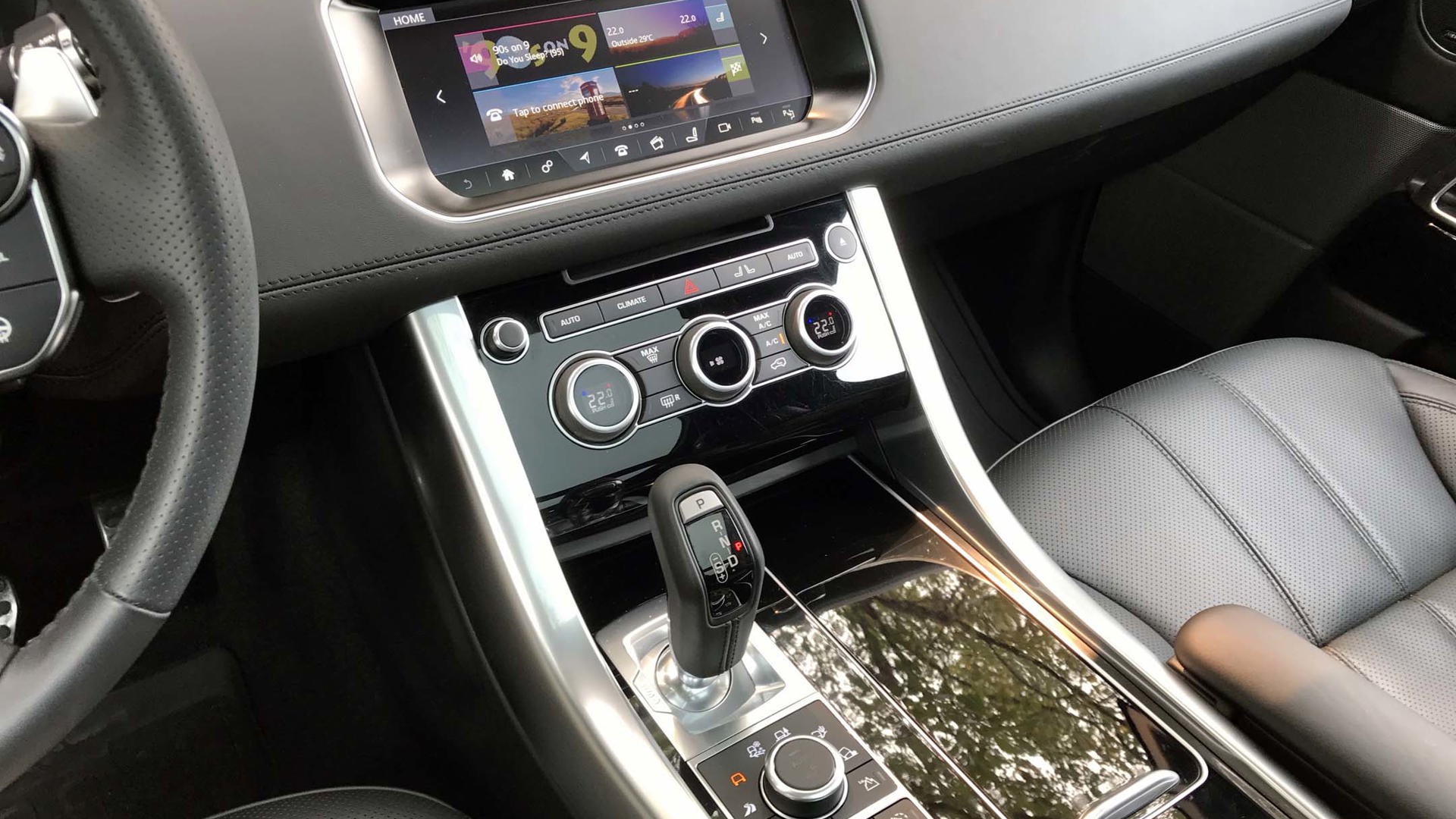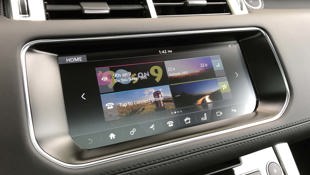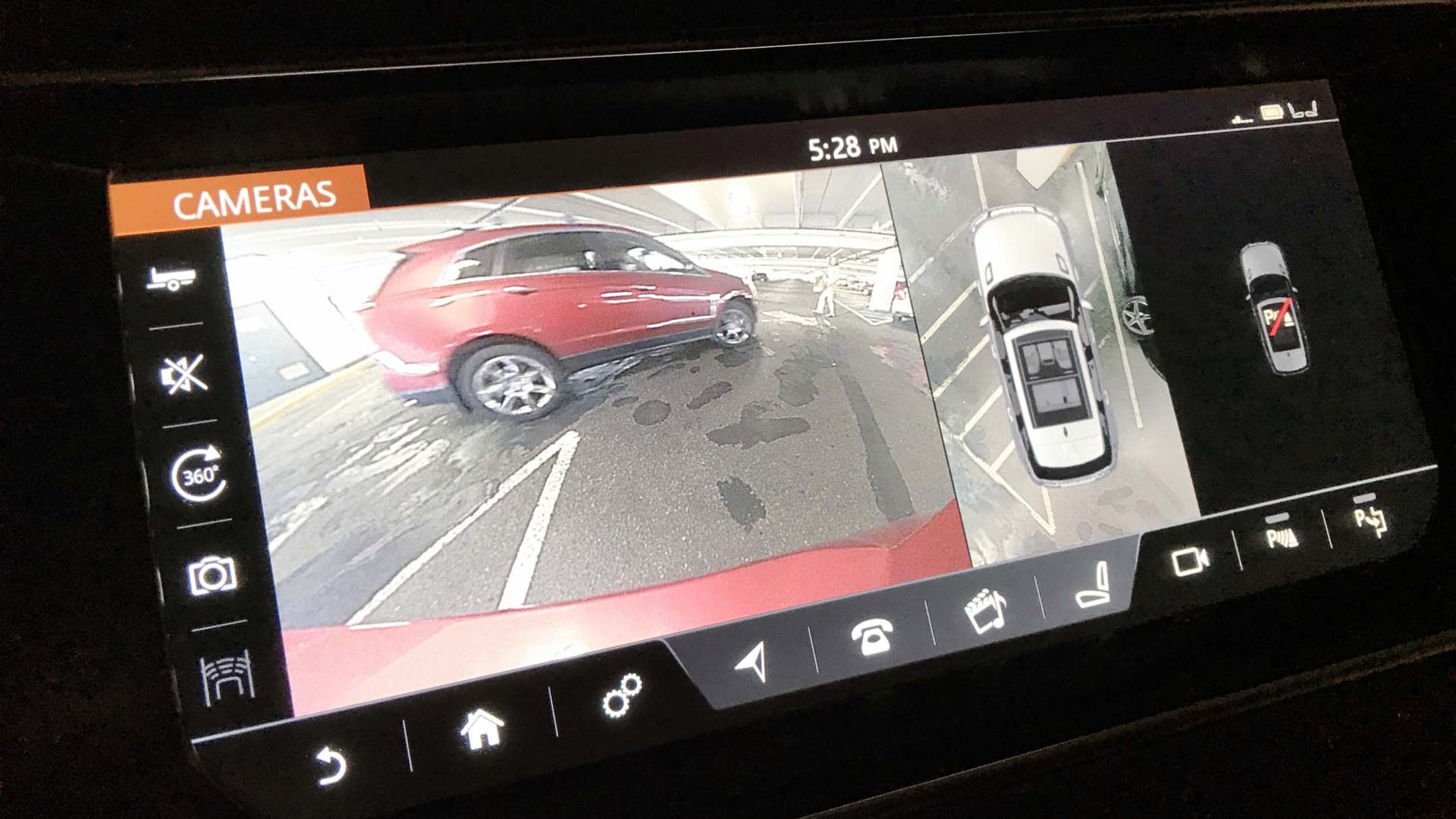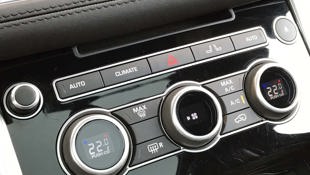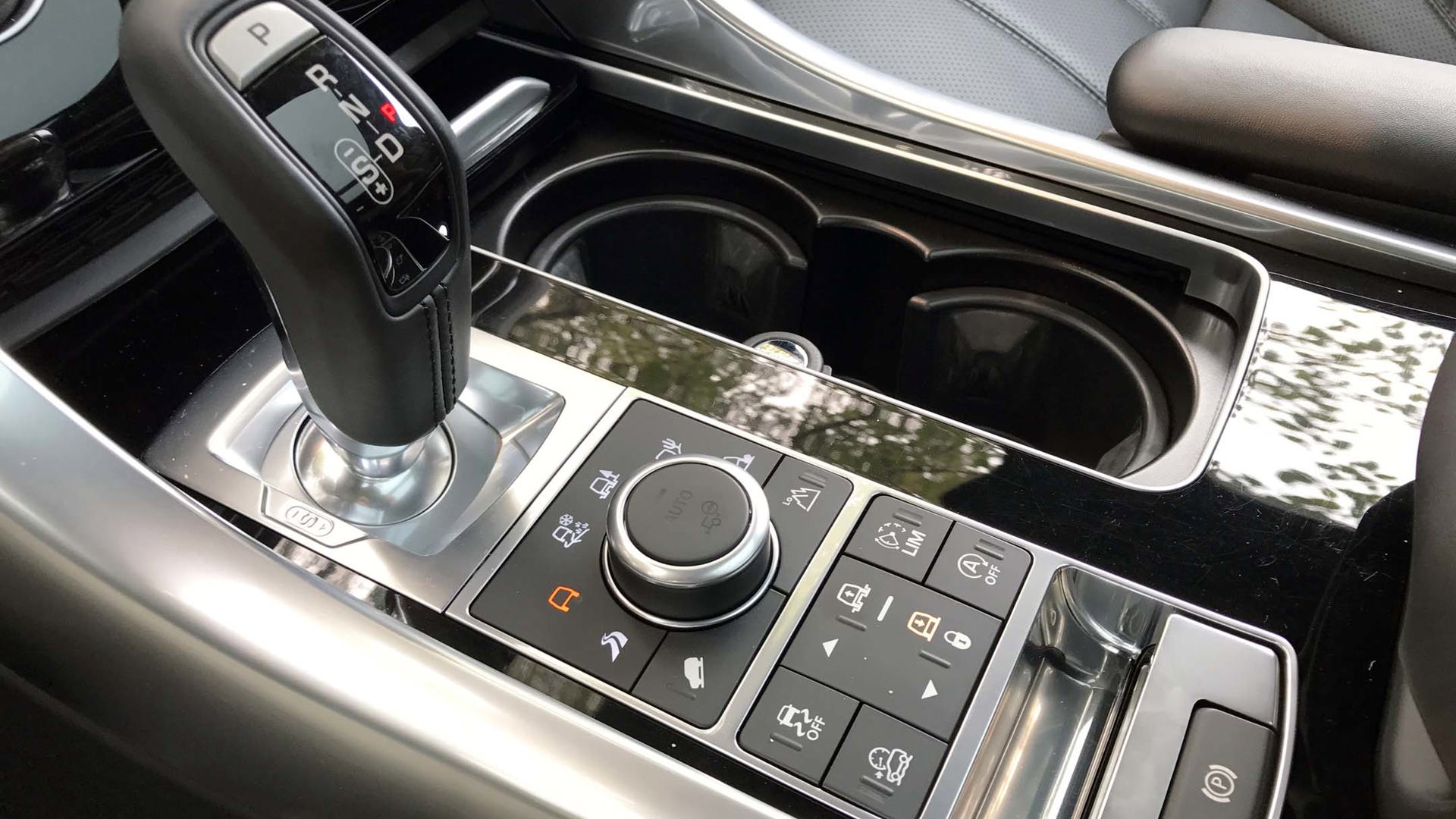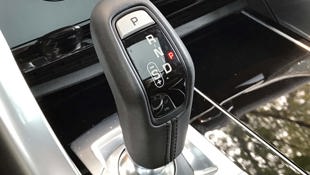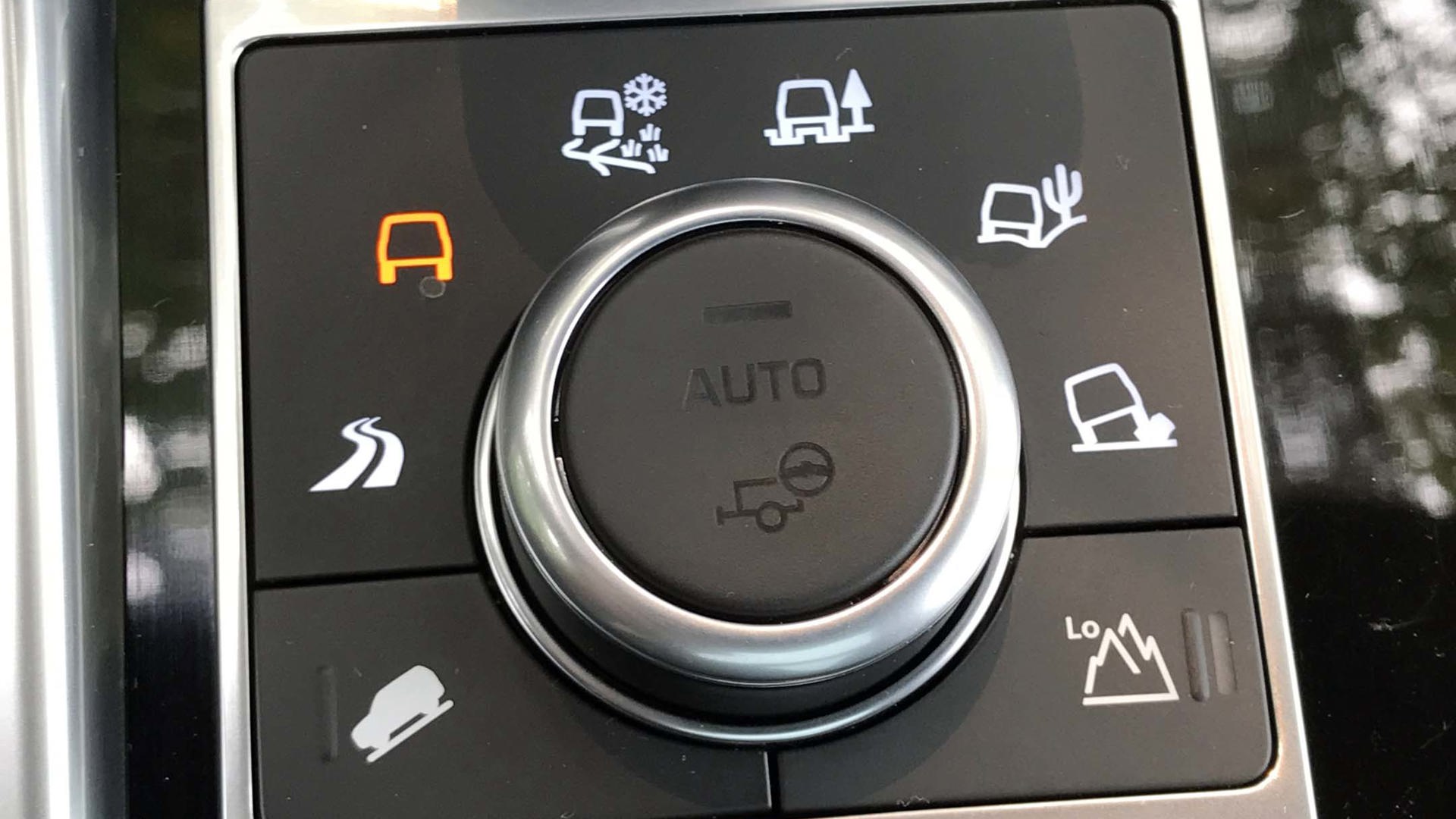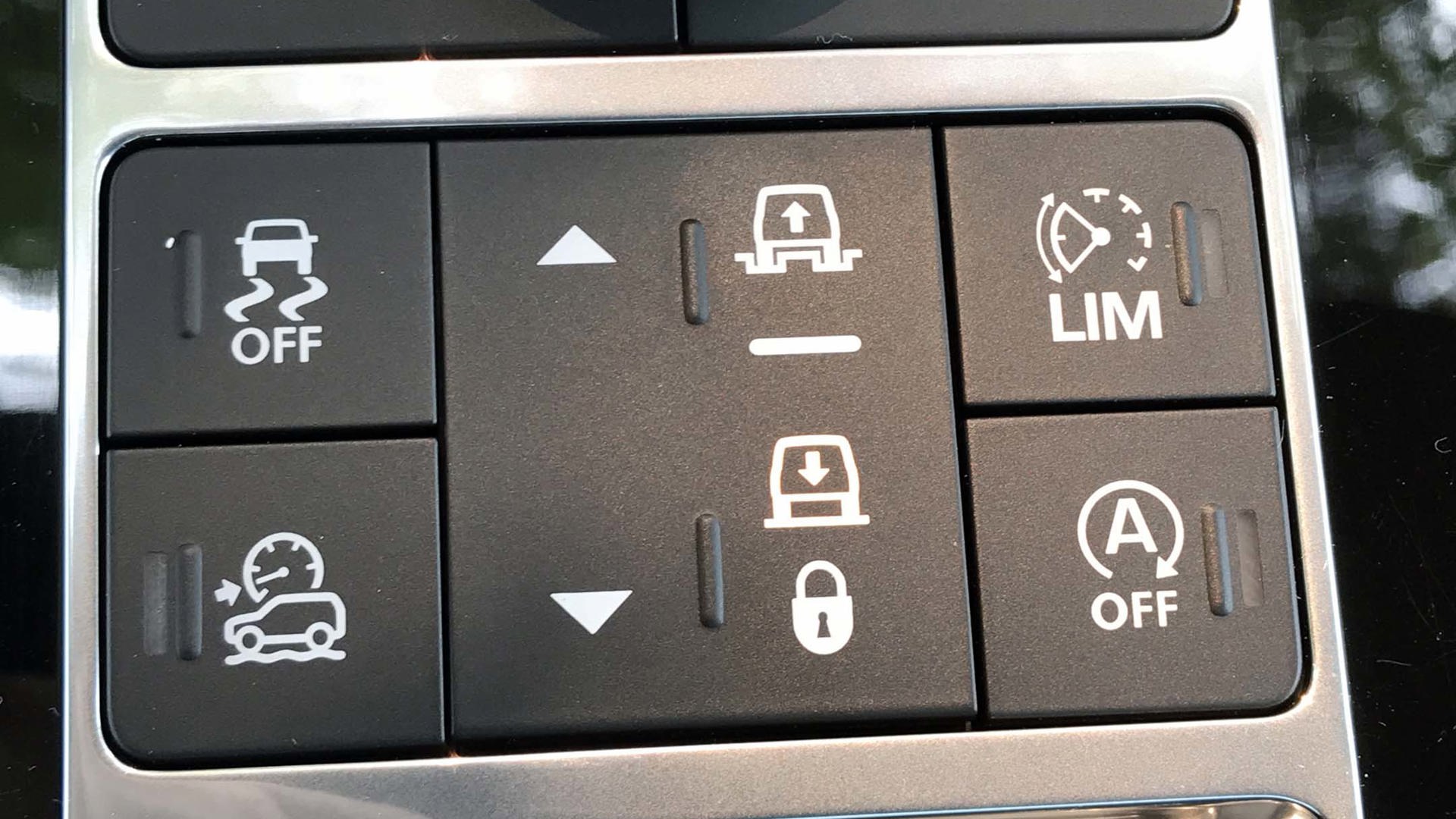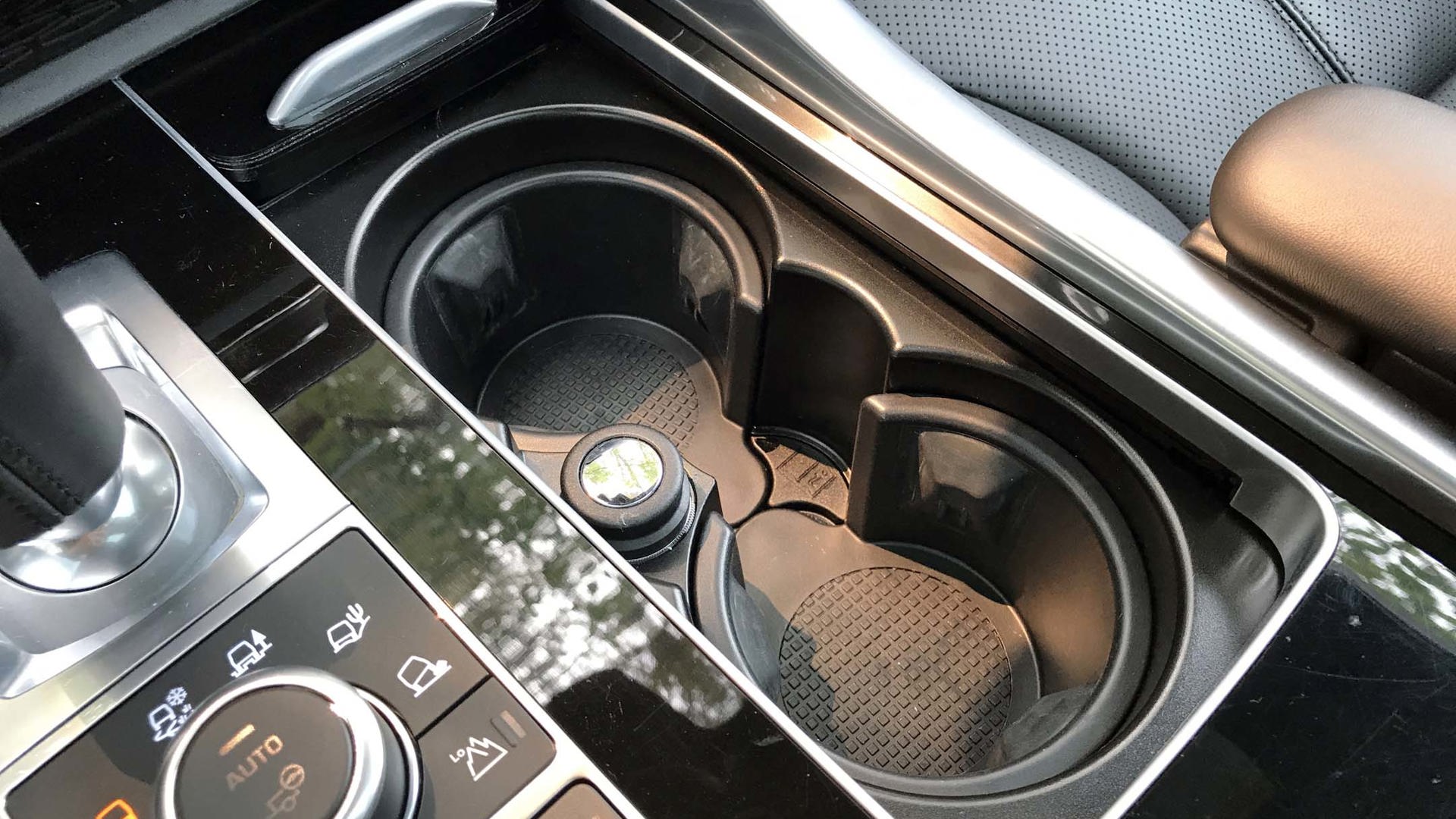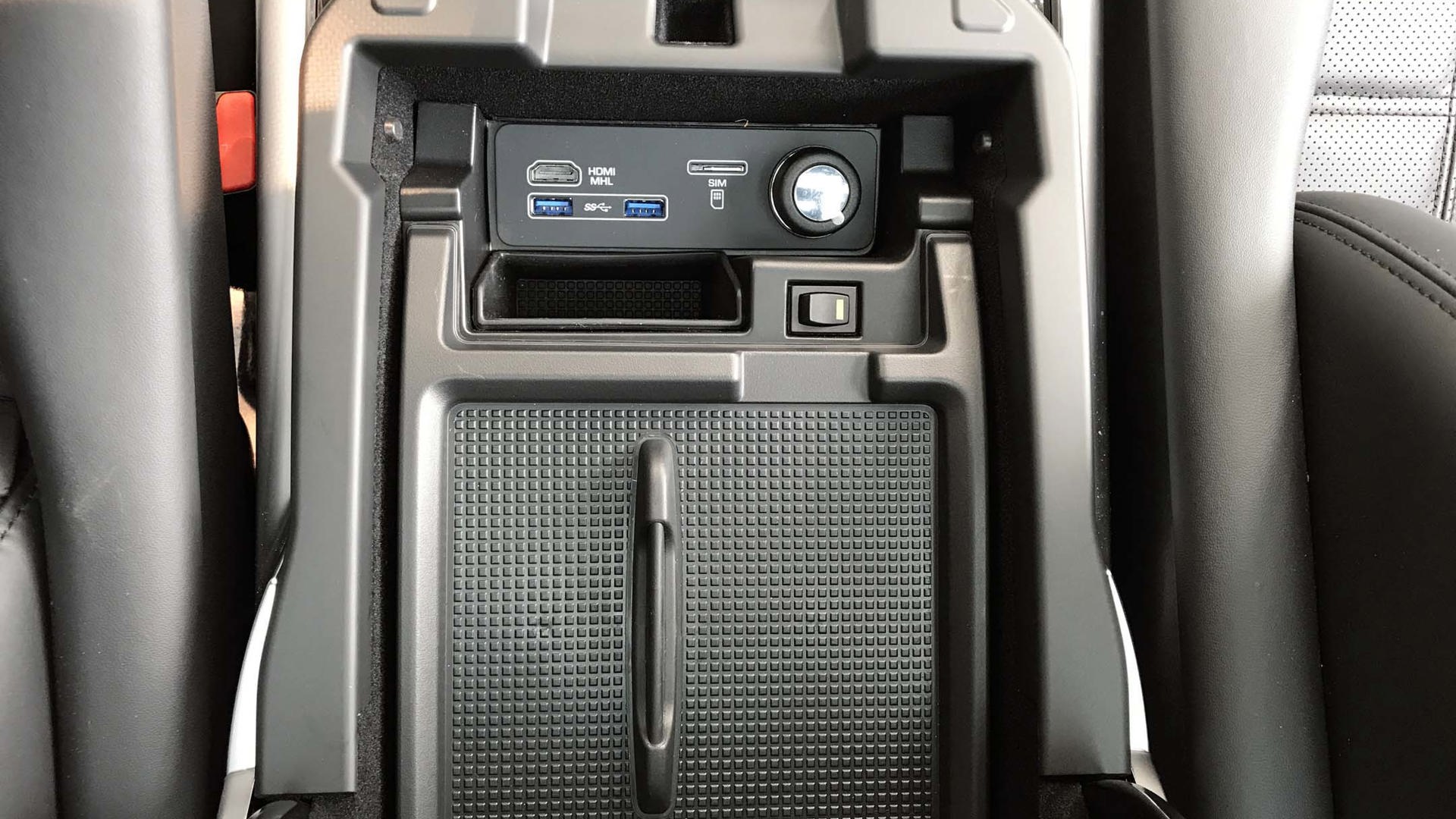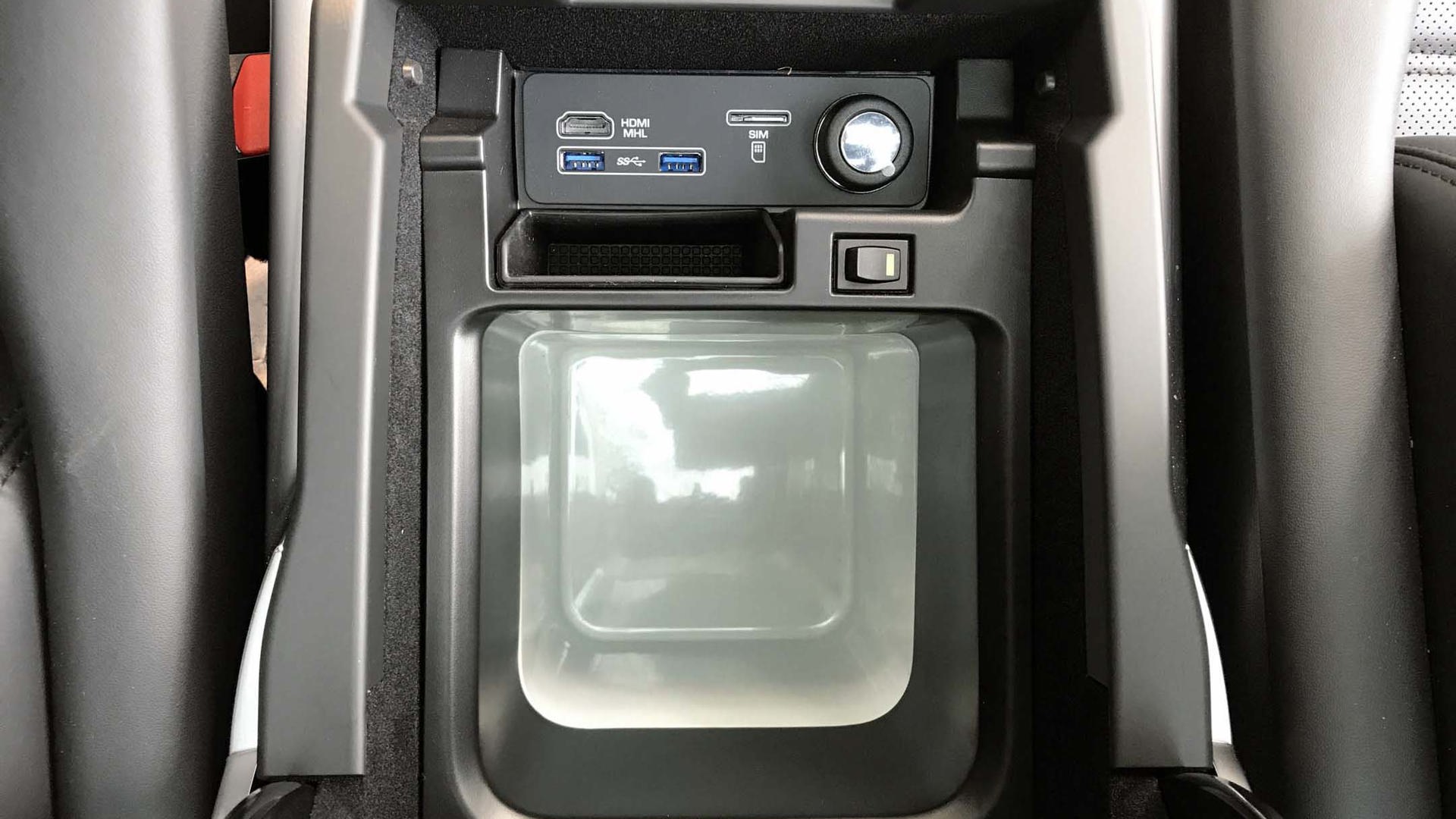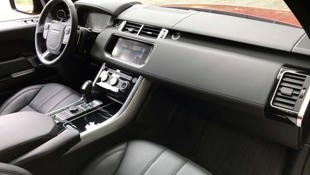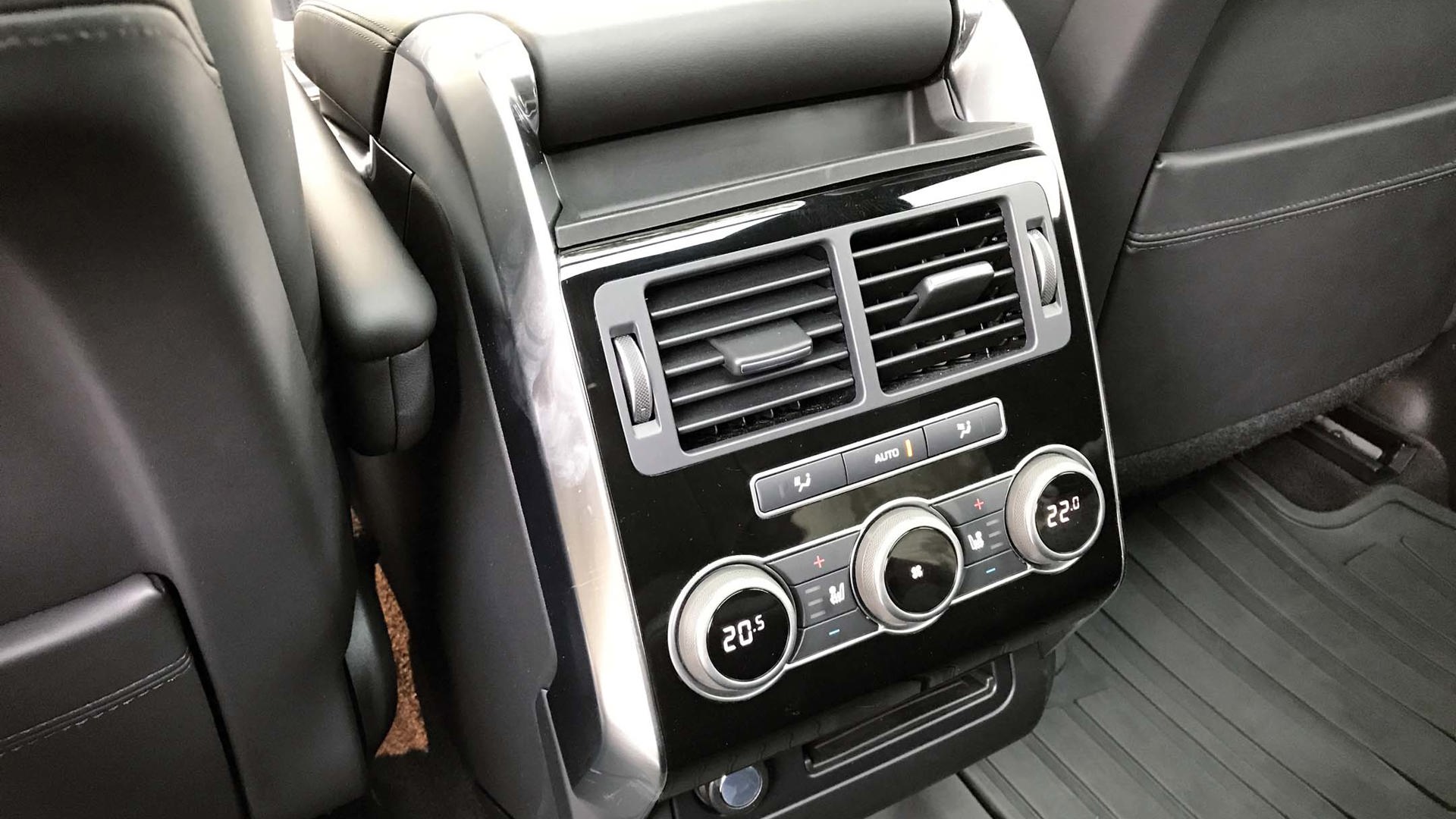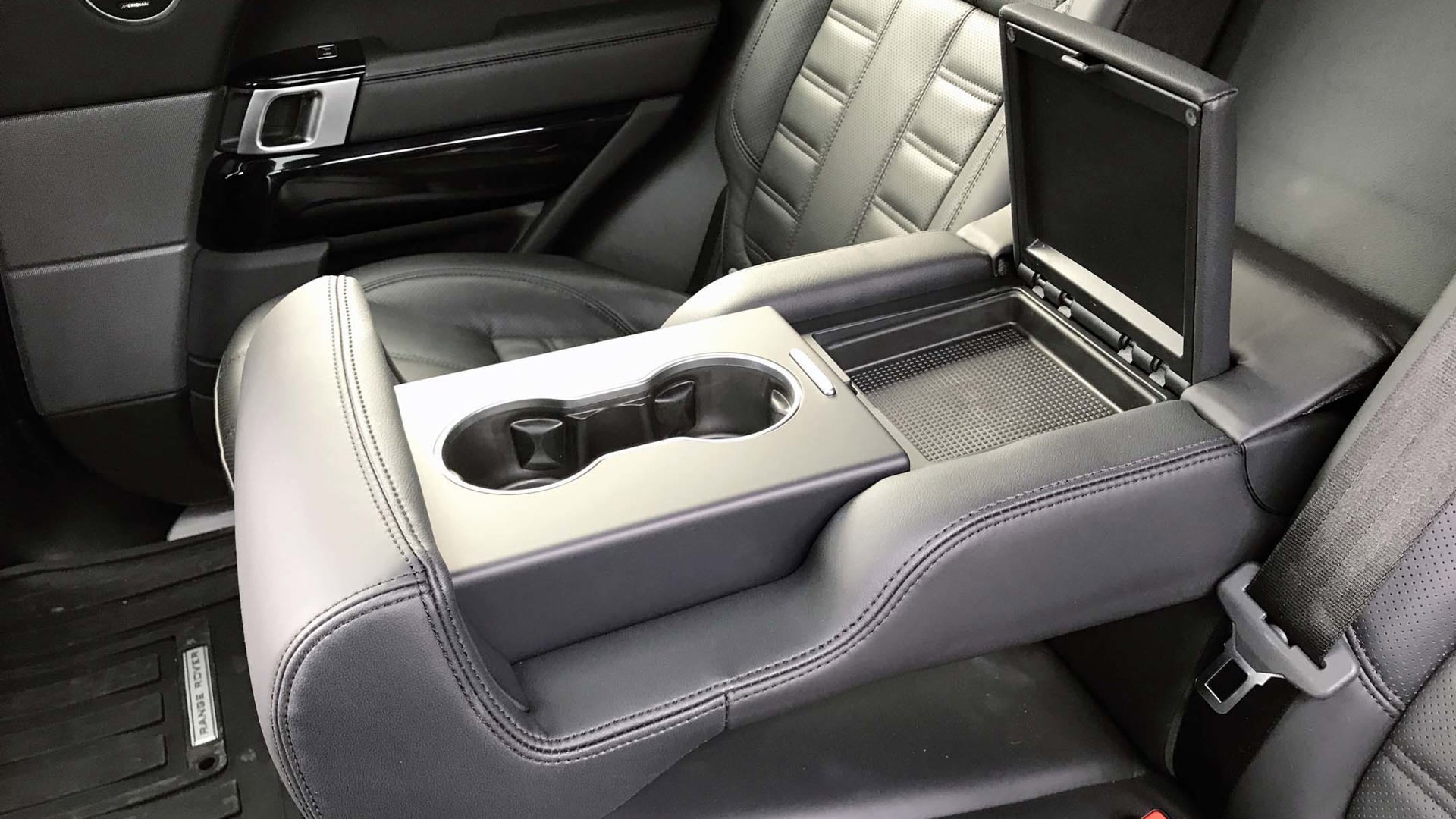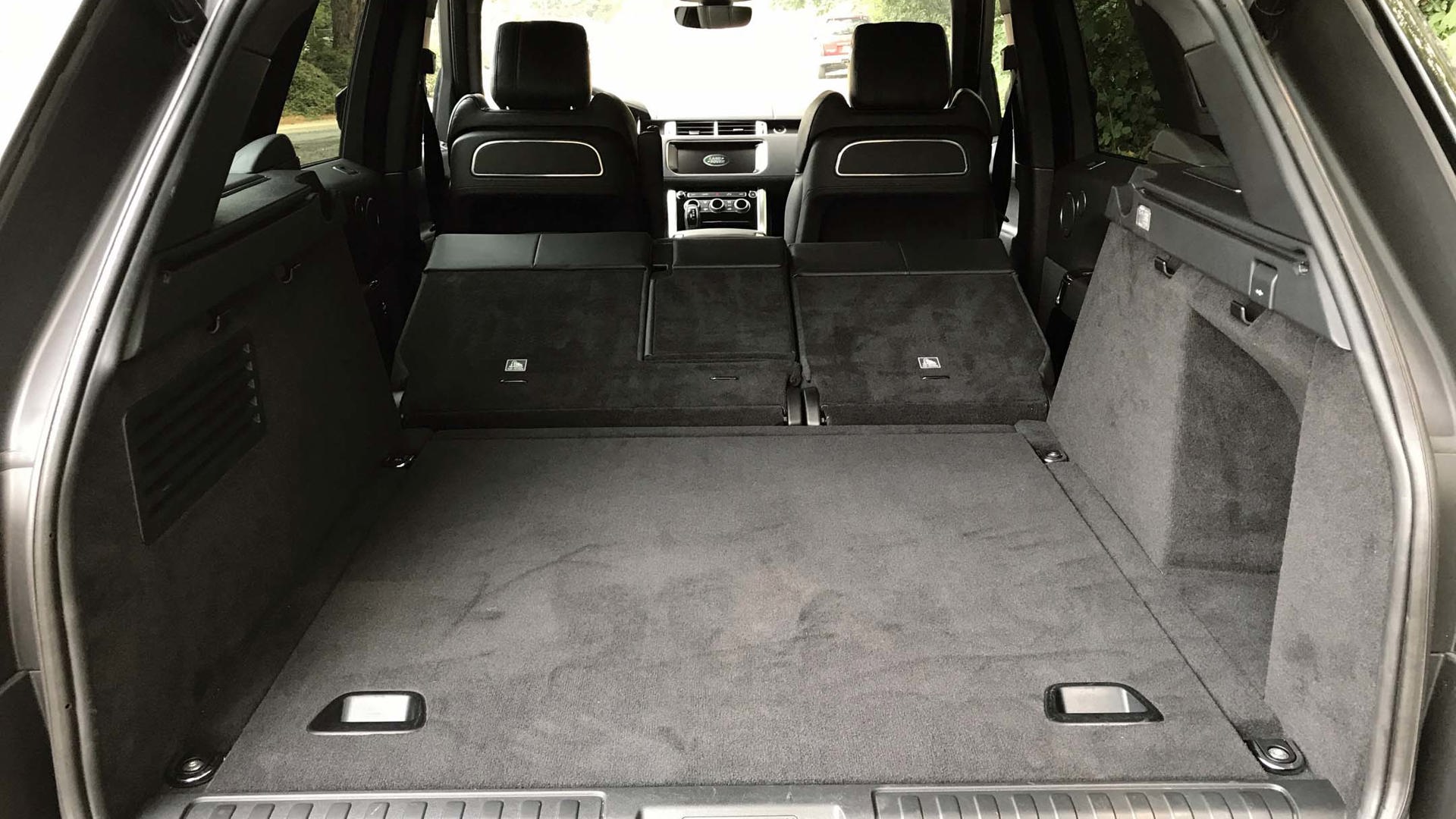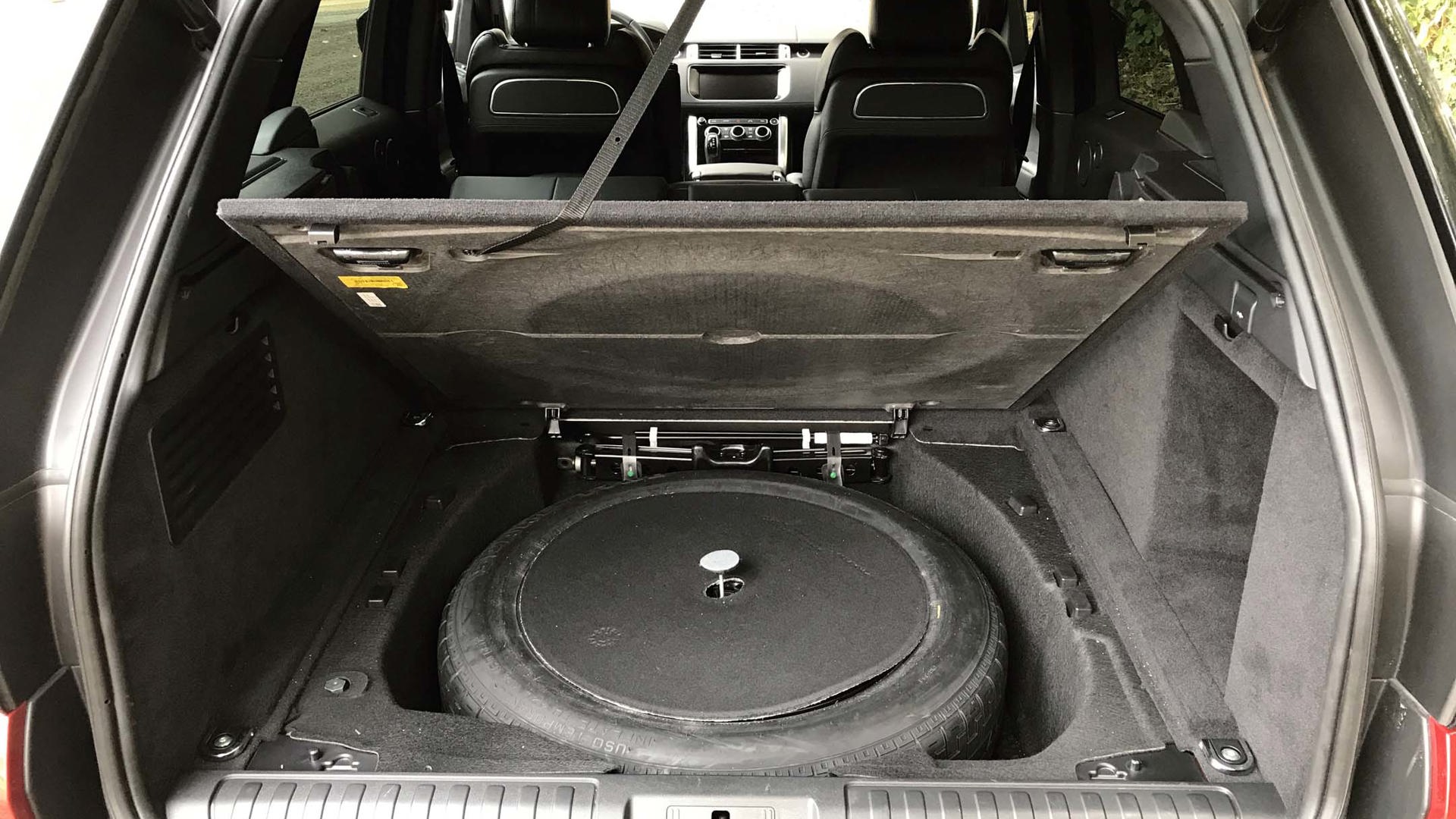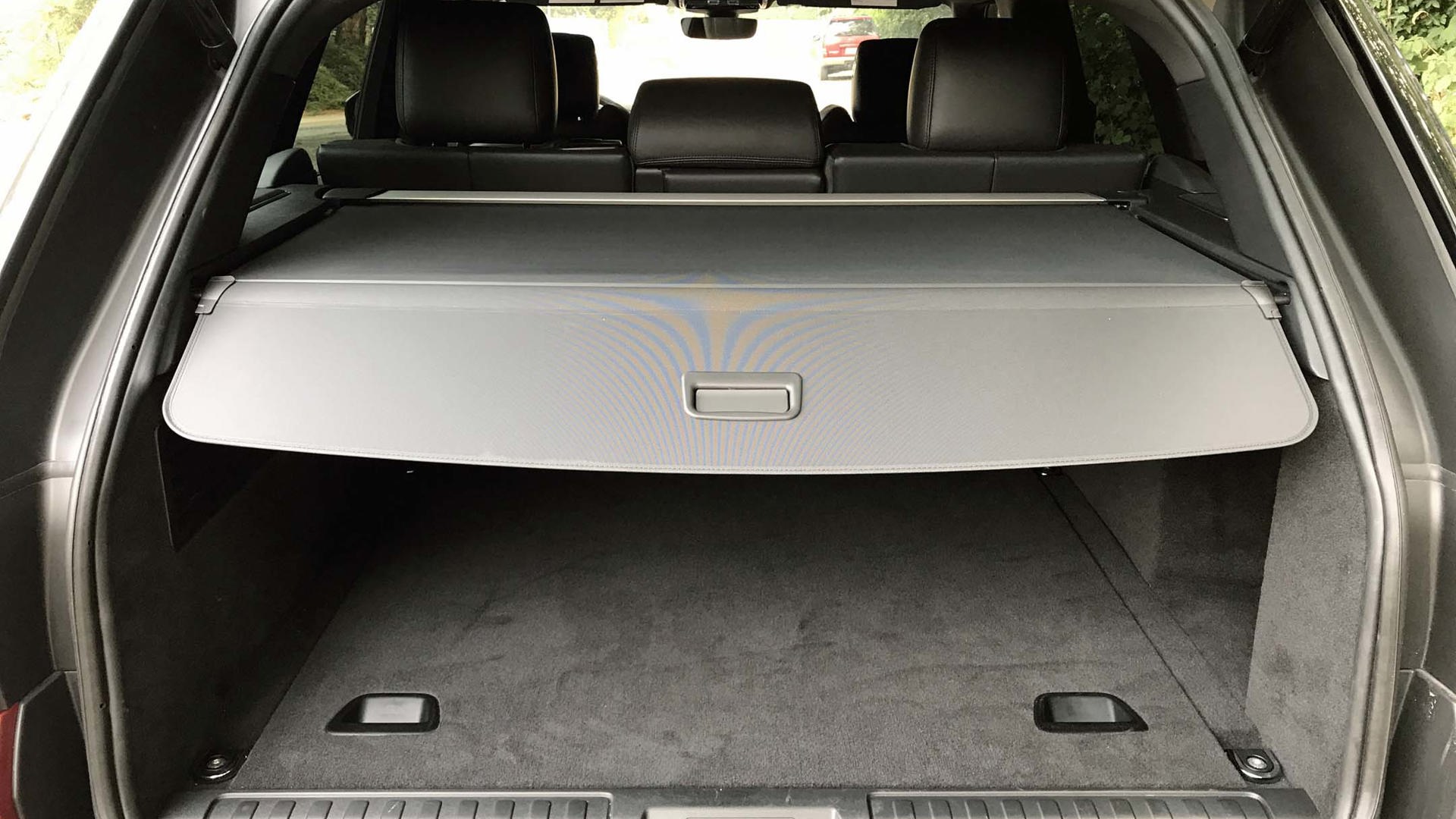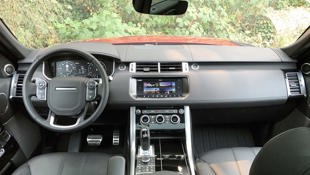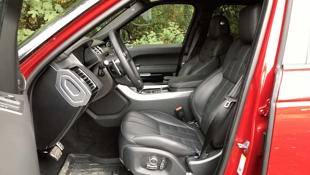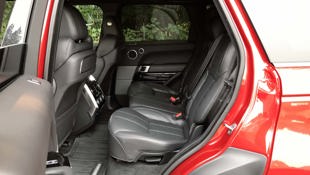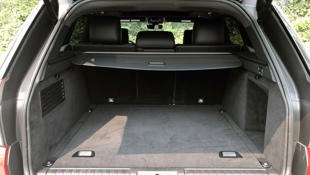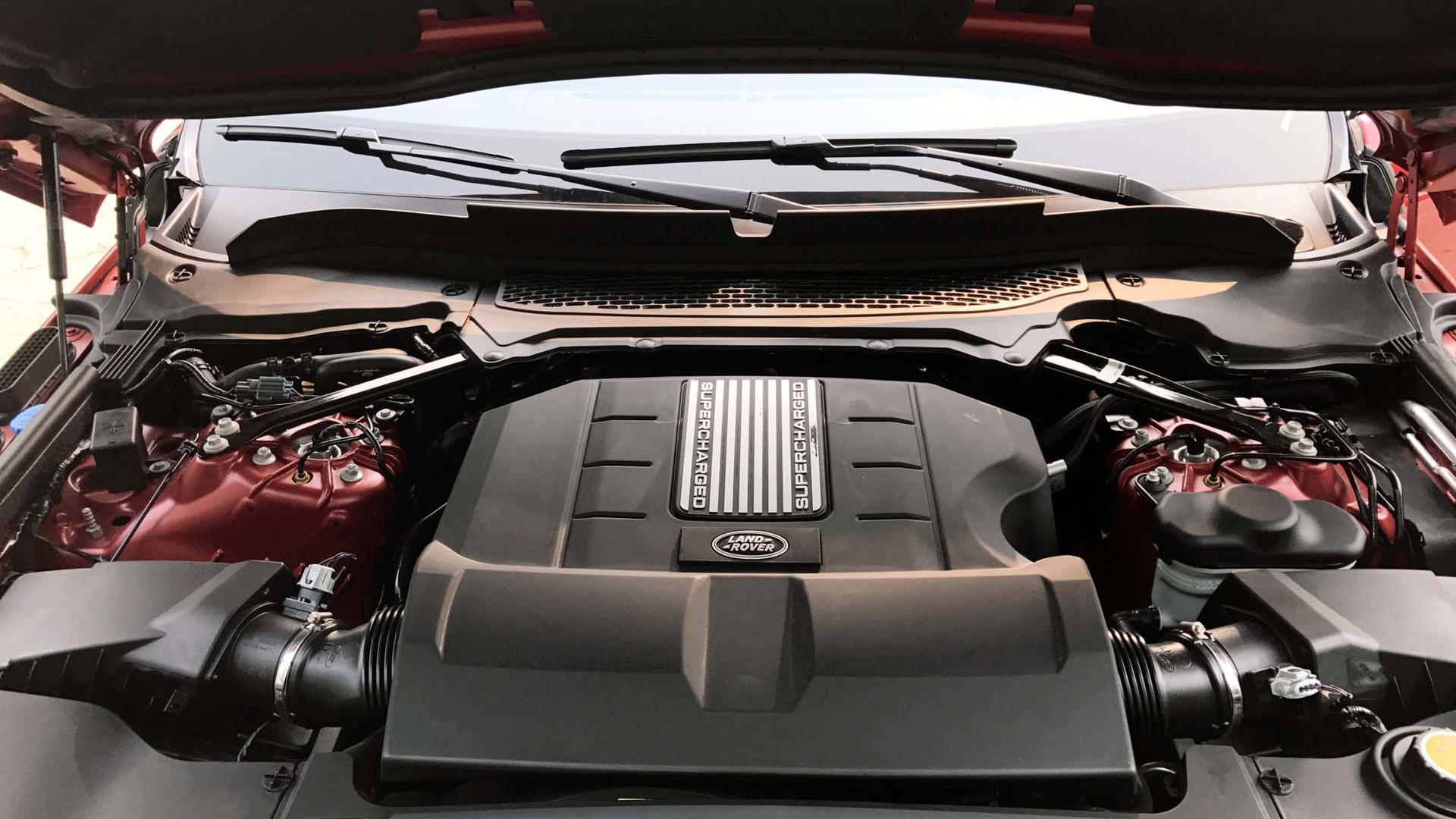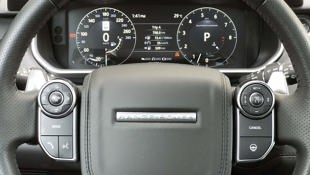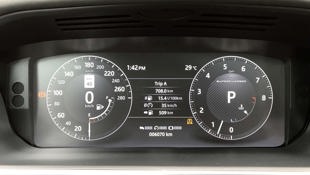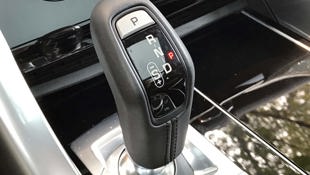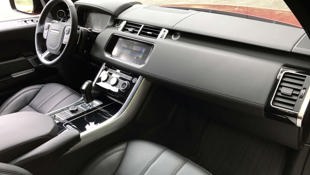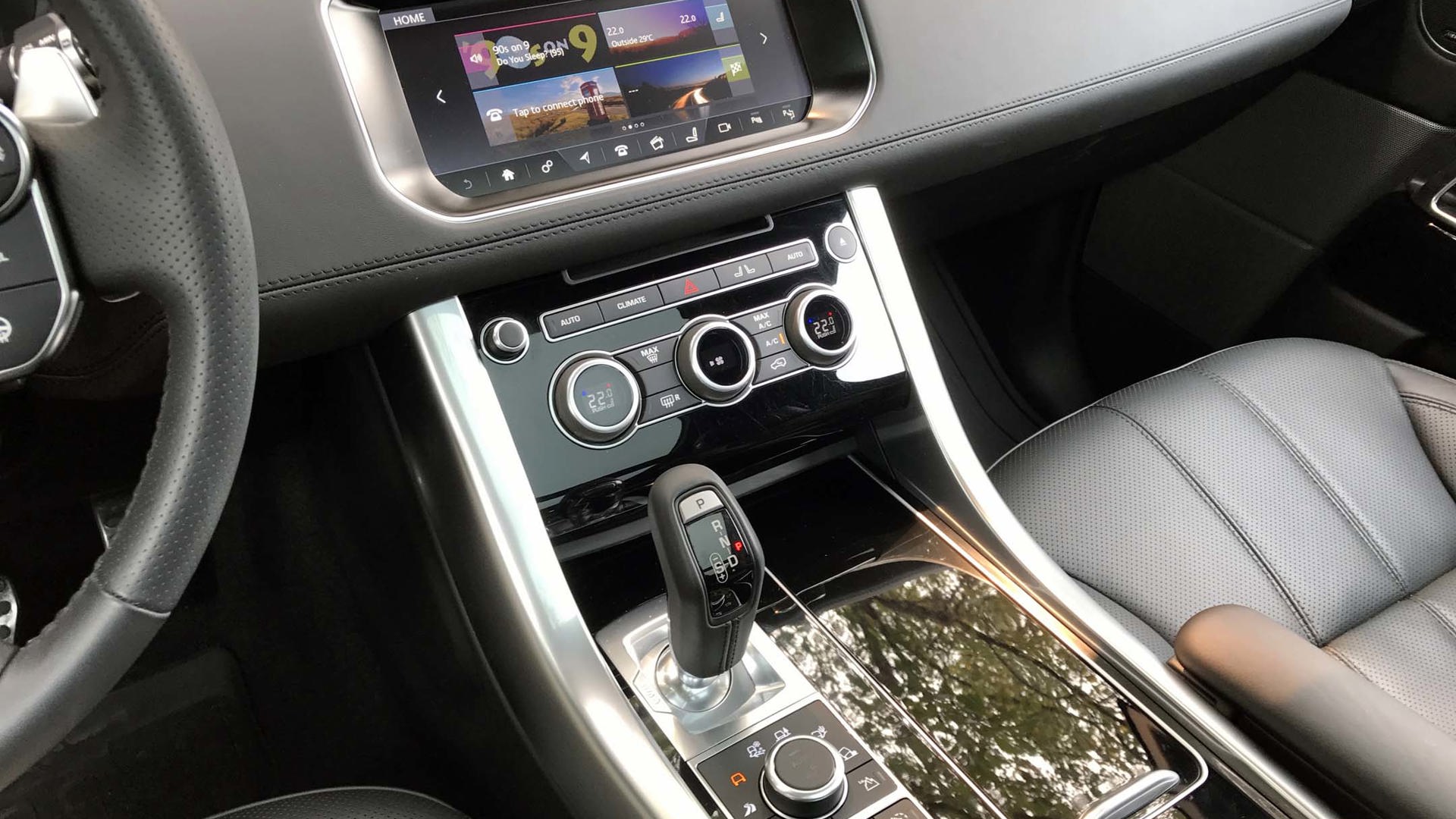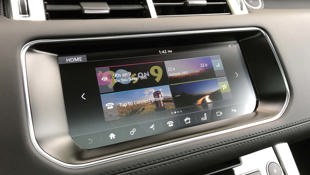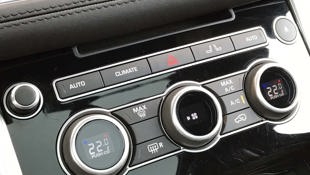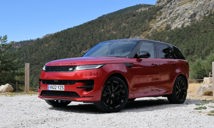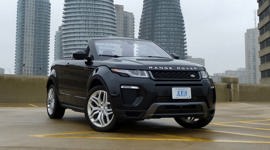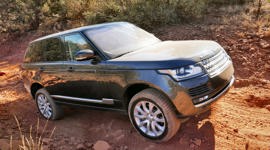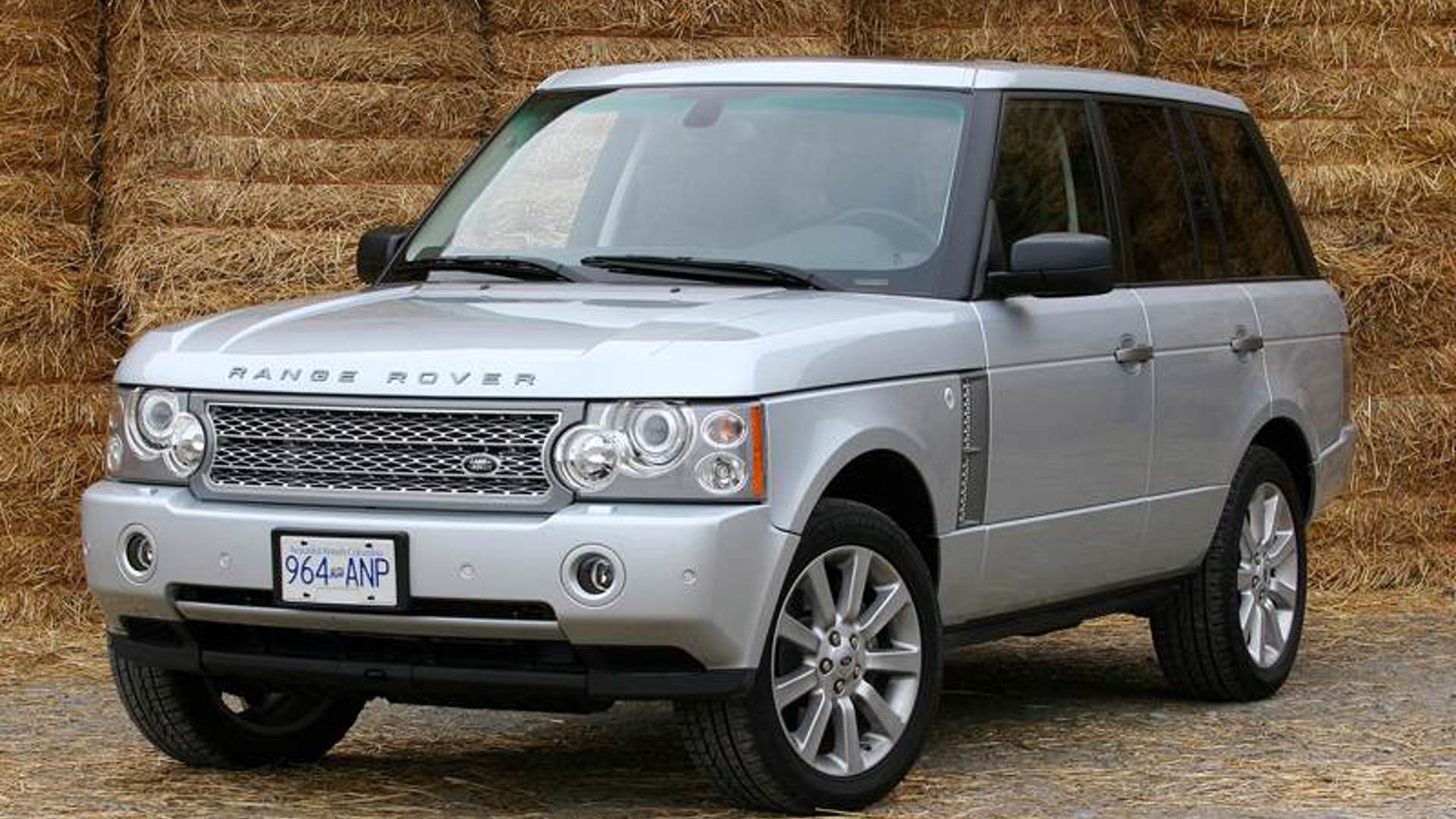 AutoTrader SCORE
AutoTrader SCORE
-
STYLING8/10
-
Safety8/10
-
PRACTICALITY8/10
-
USER-FRIENDLINESS8/10
-
FEATURES9/10
-
POWER8/10
-
COMFORT8/10
-
DRIVING FEEL8/10
-
FUEL ECONOMY5/10
-
VALUE7/10
Of the four Range Rover models – the stately Range Rover, the stylish Velar, the compact Evoque, and the performance-oriented Sport – the Sport best qualifies as the “driver’s Range Rover”. Though it’s still a full-size luxury SUV with an optional third-row seat, the Range Rover Sport is lighter in weight, lower in height and shorter in length than the big Range Rover, and its performance is both faster and (relatively) more athletic than its bigger sibling, while (amazingly) still capable of similar off-road feats.
Under hard acceleration, the twin exhausts emit a racy V8 exhaust note that sounds like an American muscle car.
It’s also less expensive than the big Rover. Ranging in price from $77,000 to $127,500, 2017 Sport models are available in seven trim levels with three different engines: Range Rover Sport SE ($77,000) and HSE ($82,500) come with a standard 340 hp supercharged V6 engine, eight-speed automatic transmission, and all-wheel drive; while the HSE Dynamic ($92,500) bumps the horsepower up to 380. The HSE is also available with a 258 hp turbocharged 3.0-litre V6 diesel engine ($84,500). Range Rover Sport Supercharged ($94,000), Supercharged Dynamic ($98,500), and Autobiography Dynamic ($109,500) models upgrade to a 510 hp supercharged V8; while the top-of-the-line SVR model ($127,500) bumps the horsepower up to 550.
Our test vehicle, a 2017 Land Rover Range Rover Sport Autobiography Dynamic model, features a sporty “Firenze Red” paint job and black exterior trim. Apart from its twin chrome tailpipes and chrome “Autobiography” badge, there’s not a single piece of chrome trim on the entire exterior, not even the window frames. Everything has been blacked out, including the front grille, hood vents and front fender vents (both fake), lower bumpers and fog light surrounds, alloy wheels, roof, “Range Rover” lettering on the hood and tailgate, and dark-tinted rear side windows. The red and black colour combination is certainly eye-catching and somewhat menacing. During the week that I drove the Sport, it never failed to turn heads.
Sounds like a muscle car
Under the flat hood lurks a supercharged 5.0-litre V8 engine with a generous 461 lb-ft of torque mated to a wonderfully smooth eight-speed automatic transmission. Despite weighing 2,500 kilograms, the hefty Ranger Rover Sport Autobiography can zip from zero to 100 km/h in 5.3 seconds (Range Rover’s figures) and potentially see a top speed of 250 km/h. Under hard acceleration, the twin exhausts emit a racy V8 exhaust note that sounds like an American muscle car. Unlike some supercharged engines, there is no audible whine from the supercharger. At freeway speeds, the engine is whisper-quiet in part because the engine turns over less than 1,500 rpm in top gear at 100 km/h.
The Range Rover Sport’s eight-speed automatic transmission shifts so smoothly, you barely notice it, but there is a slight lag in throttle response when you first depress the gas pedal. You can shift gears manually by moving the shift lever over to the left and tapping forwards or backwards sequentially, or by using the paddle shifters behind the steering wheel.
If you’re not used to a sequential gearshift lever, it can take a while to feel comfortable with it. The driver selects Reverse, Neutral, and Drive by pushing and pulling the lever sequentially, but Park is activated by a button on top of the lever. With your hand on the lever, you have to look in the instrument cluster to see which gear you’re in.
Fuel consumption is thirsty, to say the least. Highway fuel consumption is rated at 12.2 L/100 km while city consumption is rated at 16.5 L/100 km with a combined rating of 14.6 L/100 km. Our onboard fuel consumption display was showing an average fuel economy of 15.6 L/100 km. To repeat an oft-used phrase, if you can afford the $109,000 price tag, you can afford the gas!
While paused at traffic lights, the V8 engine stops automatically to save fuel and starts automatically when the brake pedal is released. This is a real fuel saver in stop-and-go traffic but it can be confusing when parking. For example, when you pull into a parking spot and put it in Park the engine stops automatically, but the engine isn’t really turned off – it’s just paused. After parking, I found myself deactivating the stop-start feature so that the engine would restart so that I could turn it off again!
Speaking of parking, the Sport is a tall, wide vehicle that needs a big parking space. Thanks to front and rear parking sensors which flash and beep frantically when you approach solid obstacles, a rear-view camera, and top-down 360-degree camera view, the Sport is comparatively easy to reverse into or out of a standard parking space without scratching that lovely Firenze Red paint. If the underground parking roof is too low, you can press a button on the console to lower the ride height of the air suspension.
Air suspension offers comfortable ride
Driving in town or on the freeway, the Sport’s electronic air suspension provides a very comfortable ride despite the Sport’s huge 22-inch wheels and paper-thin tire sidewalls. For such a tall, heavy vehicle, handling is surprisingly good. It leans but doesn’t feel tippy and is well-planted through sweeping turns. That’s not just because you are a good driver: a host of computer-controlled ride and handling features are doing much of the work for you. All Supercharged V8 Sport models include Dynamic Mode and Dynamic Response hydraulic roll control to reduce body lean; Torque Vectoring combined with an Active Rear Locking Differential that automatically distributes power between all four wheels to improve grip and steering control; and Dynamic Stability Control which uses yaw sensors to maintain directional control. It also includes automatic ride height control which lowers the vehicle at speed and when the ignition is turned off.
For 2017, the Sport offers newly available safety features such as driver fatigue alert, forward alert, autonomous emergency braking, reverse traffic detection, lane-keeping assist, blind-spot alert, and traffic sign recognition. Of these, blind-spot alert and reverse traffic detection will see the most use and avoid potentially expensive collisions. Less likely to be used, but more likely to save your life (or someone else’s) are driver fatigue alert, forward alert and autonomous emergency braking.
Advance tow assist
Another new feature for 2017 is Advanced Tow Assist. Using the round dial on the centre console and the 360-degree camera image, the driver can steer the trailer while reversing with the help of instructive guidelines. Range Rover Sport models are rated for a generous 3,500 kg towing capacity and feature a trailer stability control that automatically senses trailer sway at speed and compensates by making minor steering adjustments. I didn’t get to tow a trailer this time, but in other SUVs with this feature, I found trailer stability control invaluable to keep the trailer from swaying side to side.
Still off-road capable
The Range Rover Sport’s off-road performance is impressive thanks mainly to some sophisticated technology. Equipped with the latest version of Terrain Response 2, the Sport will automatically adjust suspension, transmission, and traction settings to the type of surface being driven on. Alternatively, the driver can manually choose any one of the different modes by turning the large dial on the centre console. Choices are grass, gravel and snow, mud and ruts, sand, or rock crawl. These off-road modes will automatically optimize the height of the suspension, the transmission gearing, four-wheel-drive operation, and traction and stability control to maximize grip and stability.
As well, all V8 models have a standard two-speed transfer case with a Low Range gear for negotiating rough roads and severe inclines at slow speeds. There’s also driver-selectable Downhill Assist that automatically brakes the appropriate wheels to maintain a steady 5 km/h speed and stable attitude when descending a steep slope. The Range Rover Sport can actually descend mountain gradients up to 75 percent.
The Range Rover Sport’s standard ground clearance under the front axle is 213 mm but thanks to the Off-Road setting, the clearance can be raised to 278 mm. Should you need to cross a stream, the Sport offers a wading depth of up to 850 mm. To put that in perspective, should you step out of the Rover, the water will be up to your hips.
There’s also a Low-Traction Launch mode for pulling away on ice or wet grass and an All-Terrain Progress Control that maintains a steady speed over difficult terrain so that the driver can concentrate on steering.
The only thing that detracts from the Range Rover Sport’s off-road performance are its wide, 22-inch all-season tires. A good set of winter or all-weather tires would be a big improvement for tackling loose, slippery or icy roads.
Comfortable, well-equipped interior
When parked, the Sport automatically lowers to its lowest ride height to aid ingress/egress so the step-in height is not onerous. As well, all four doors provide large door openings for easy entry and exit. Once in, the driver sits up high and looks across a broad flat hood. Visibility to the side and rear is excellent due to large side and rear windows and a tall roof.
The front seats are extremely comfortable with prominent side and thigh bolsters for support, inboard folding armrests, three memory settings, and standard heating/cooling functions. Both front seats have multiple power adjustments including power lumbar with rolling up/down massage and the driver has a power tilt/telescoping steering wheel. Front occupants have plenty of headroom and legroom.
At the rear, the heated outboard seats are shaped like single buckets while the centre seat is a raised padded hump that’s not very comfortable. When the centre seat is not occupied, a centre armrest folds down to reveal two cupholders and a shallow storage bin with a lid. Headroom and kneeroom in the rear is generous, but footroom under the front seats is tight.
A third-row bench with two seats is optional, but these seats are too small for adults and difficult to access – and you’d be left with very little cargo space behind the third row. If you want three rows, get the extended-wheelbase Range Rover.
High-quality materials
Our test vehicle had a classy black leather interior with real aluminum trim, including prominent aluminum strips on either side of the centre stack, some more on the steering wheel and foot pedals, and thin aluminum strips around the instrument cluster, centre touchscreen, vents and speakers and foot pedal. Most leather surfaces are padded including the wide centre armrest between the front seats. Underneath the centre armrest are USB, HDMI, 12-volt power, and memory card slots. There’s also a handy drink cooler that will fit a couple of cans. A sliding cover beside the shift lever hides two cupholders.
12.3-inch TFT instrument cluster
Behind the multi-function leather-wrapped heated steering wheel is an electronic TFT instrument cluster with illuminated tachometer and speedometer flanking a central information screen with a menu operated by a button on the steering wheel. Using the button, the driver can scroll between various information screens and adjust personal settings. Menus include a trip computer summary with average fuel consumption, average speed and distance to empty; a driver assistance menu that activates/deactivates safety features such as lane-keep assist and Reverse Traffic Detection; an audio menu with favourite radio stations; media choices such as AM/FM, satellite radio or Bluetooth; vehicle information such as tire pressure or oil level; and vehicle settings such as audible warnings and automatic door locking; head-up display content; display settings for the small screen between the gauges. The TFT instrument display can also be switched to a full-width map for navigation purposes.
As well, a head-up display with speedometer, navigation instructions, and gear position can be displayed in the windshield directly ahead of the driver if desired.
Wide touchscreen
In the centre of the instrument panel, the wide 10.2-inch touchscreen provides quick access to major functions such as climate control, radio, and navigation via a menu bar on the bottom of the screen. The Home screen has four mini-displays for audio, climate, telephone, and navigation. Pressing one of these small screens activates a larger screen with screen buttons to activate functions such as radio station, temperature, or telephone numbers. You can also pinch and swipe some features and voice activation is also offered.
Land Rover’s InControl phone app is also available to connect the infotainment system with your Android or Apple smartphone or even an Apple Watch. InControl allows the owner to remotely lock or unlock doors, pre-heat or pre-cool the interior, start the engine, check fuel levels, or find the vehicle in a parking lot. Like OnStar, InControl can summon help in an emergency or collision.
Even though there are climate controls in the touchscreen interface, there are three traditional dials for the four-zone climate control below the screen. Frankly, these are easier to find and use than the touchscreen controls. Rear passengers also have their own traditional dual-zone climate control at the rear of the centre console.
Most audio function are activated using the touchscreen, but Range Rover wisely left a small round dial for audio volume on the instrument panel. Sliding volume adjusters on touchscreens just don’t seem to work very well.
The touchscreen also acts as a rearview camera when in Reverse gear and includes a top-down 360-degree view of the area around the vehicle that helps when parking.
Dual glass moonroofs illuminate the cabin with natural light and when the sun gets too bright, a power sunshade keeps out the heat.
Cargo area nicely finished
The Range Rover’s rear liftgate can be opened manually or with the remote key fob, but if you are holding parcels in your hands, you can swing your feet under either side at the rear to automatically open the liftgate. With 784 litres of cargo space, a wide opening and a tall roof, the Sport’s cargo area is usefully sized. But like all 4WD SUVs, the cargo floor is high because of all the 4WD hardware underneath. The cargo area itself is fully carpeted including the side walls and rear seatbacks. To keep the trunk contents private, there’s a (removable) pull-type sliding cover. Longer items can be accommodated by folding down one or both of the split rear seatbacks which fold down almost flat.
Pricing and standard equipment
As noted earlier, 2017 Range Rover Sport models are available in seven trim levels: SE ($77,000), HSE ($82,500), HSE w/Dynamic Package ($92,500), Supercharged ($94,000), Supercharged Dynamic ($98,500), Autobiography Dynamic ($109,500), and the range-topping SVR ($127,500).
Standard in the SE is a 340-hp supercharged V6 engine, eight-speed automatic transmission, all-wheel drive, 19-inch tires and alloys, and a sumptuous leather interior; the HSE adds 20-inch tires/alloys, front fog lights, perforated “Oxford” leather seats, panoramic glass moonroof, and the optional availability of a 246 hp turbocharged V6 diesel engine; the HSE Dynamic adds 40 horsepower with a 380 hp supercharged 3.0-litre V6, larger 21-inch tires/alloys, Terrain Response adjustable suspension, adaptive dynamics, red Brembo brake calipers, black roof, front/rear heated and cooled seats, and 16-way driver’s seat; the Supercharged model jumps to a 510 hp supercharged 5.0-litre V8 with a two-speed transfer box (high/low ranges), Terrain Response 2, electronic air suspension, and 20-inch tires and wheels; slightly flashier is the Supercharged Dynamic with 21-inch tires/wheels, blacked-out grille and fender/hood vents, automatic xenon headlights and a higher overall top speed; the loaded Autobiography Dynamic trim adds a dark roof, blind-spot and traffic alerts, surround camera, driver condition monitor, and 18-way front seats; top-of-the-line SVR performance model features a 550 hp supercharged 5.0-litre V8 engine, Brembo brake calipers, rear spoiler, quad tailpipes, unique grille and bumpers, darkened headlight surrounds, and grippier front sport seats.
Verdict
Combining luxury, performance and off-road ability with a sporty flair, the Range Rover Sport is a versatile and formidable SUV with an equally formidable price tag and a rapacious thirst for fuel.
| Engine Displacement | 5.0L |
|---|---|
| Engine Cylinders | V8 |
| Peak Horsepower | 510 hp |
| Peak Torque | 461 lb-ft |
| Fuel Economy | 16.5/12.2/14.6 L/100 km city/hwy/cmb L/100 km |
| Cargo Space | 784 L |
| Model Tested | 2017 Land Rover Range Rover Sport 5.0 Supercharged V8 Autobiography Dynamic |
| Base Price | $109,500 |
| A/C Tax | $100 |
| Destination Fee | $1,600 |
| Price as Tested | $122,250 |
|
Optional Equipment
$11,050 – 22-inch satin black alloy wheels $2,400; Stealth Pack $2,000; Park Assist $950; Advanced Tow Assist $250; Tow Hitch $650; Head-up Display $1,350; Ebony Premium Highlining $400; Climate Comfort Pack (4-zone climate control, climate front/rear seats, cooled console, less active vanes, engine cooling fan) $900; Veneer-Extended Grand Black (ambient lighting, bright switch finish, veneer door finishers) $700; Drive Pack Pro (Collision Mitigation, Adaptive Cruise Control, Lane Departure Warning + Lane Keep Assist, Blind Spot Monitor, Reverse Traffic Detection) $1,450
|
|
